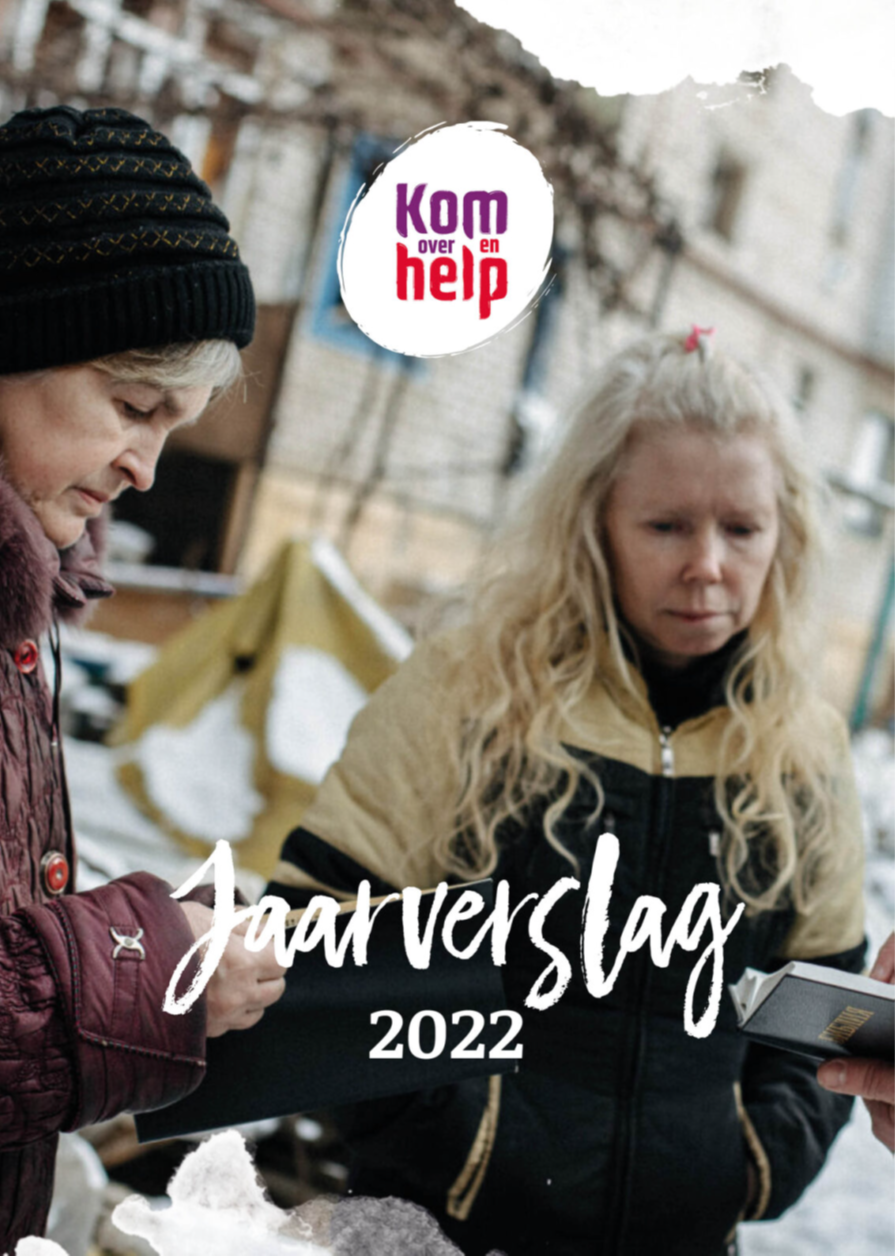
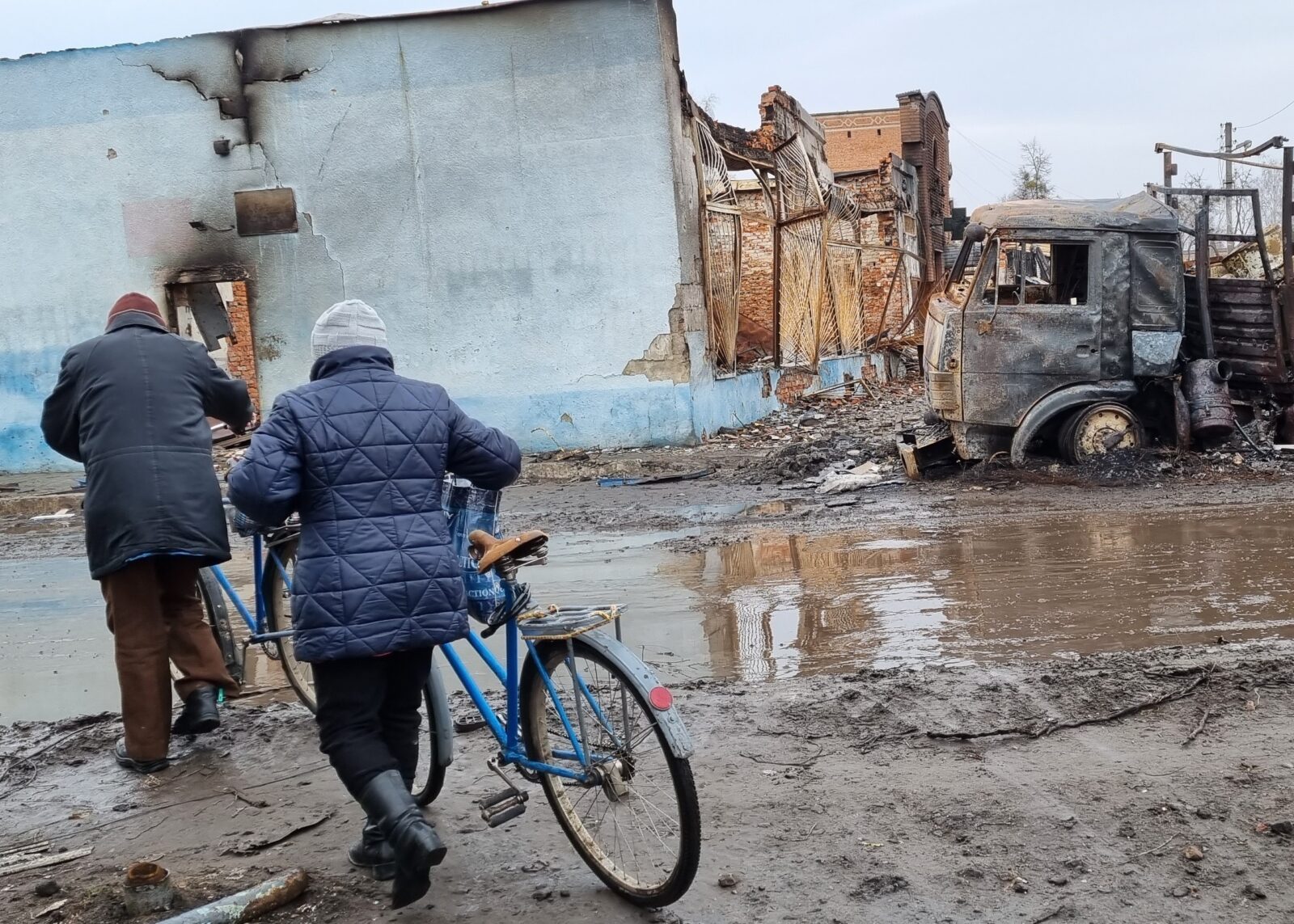
Foreword
Please find herewith the annual report for 2022. A year with far-reaching events, with great concerns, but also special blessings. The corona pandemic also went into the background in the countries where we work. Gratitude for this was almost immediately overshadowed by the war in Ukraine with all its consequences. A war that already claimed so many victims, touching so many lives and causing physical and/or psychological damage. Our thoughts are with all those people scarred for life.
I
n this reporting year, the brutal violence of war has demanded a great deal from the partners in Ukraine with whom we work and feel connected. Needs for help sometimes took on a completely different content in a matter of days. Flexibility and resilience were put to the test, both of the partners and of our office staff.
Not only the need in Ukraine demanded our attention. Moldova was also indirectly involved in this war situation. Many refugees sought refuge in this poorest country in Europe, with all the associated worries! Finally, I would like to mention Armenia. The long-dormant conflict situation with Azerbaijan flared up several times.
Financially, we closed this reporting year with the highest amount of income in our history, namely €6,400,000. Of this, over €3,100,000 came in through the Ukraine Emergency Fund. This huge amount was partly achieved through professional cooperation with six other organisations within the national Christian Relief Cluster. With gratitude, we can state that in addition, regular donations also increased. This makes us silent and amazed.
These financial resources enable us to give even more substance to our core values: commitment, entrepreneurship and relationship!
Looking back at the year 2022, the words of the Lord Jesus come to mind:
6. And you will hear of wars and rumors of wars. See that you are not troubled; for all these things must come to pass, but the end is not yet. 13. But he who endures to the end shall be saved.
Matthew 24 verse 6 and 13 (NKJV)
The Lord reigns! For all the suffering on this earth, we may know that His Kingdom is coming, on which righteousness will dwell! This then brings us to the personal question: is that Kingdom also your and my expectation? Then we are truly safe, in whatever circumstances we find ourselves. That gives confidence, also for 2023!
Marc Holleman
Chairman
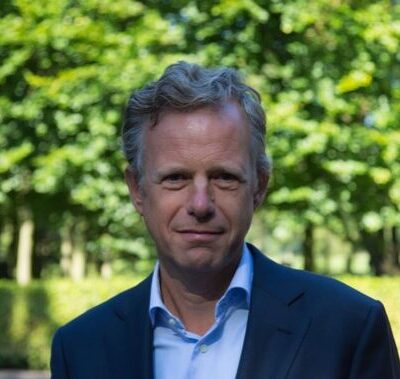
In a nutshell
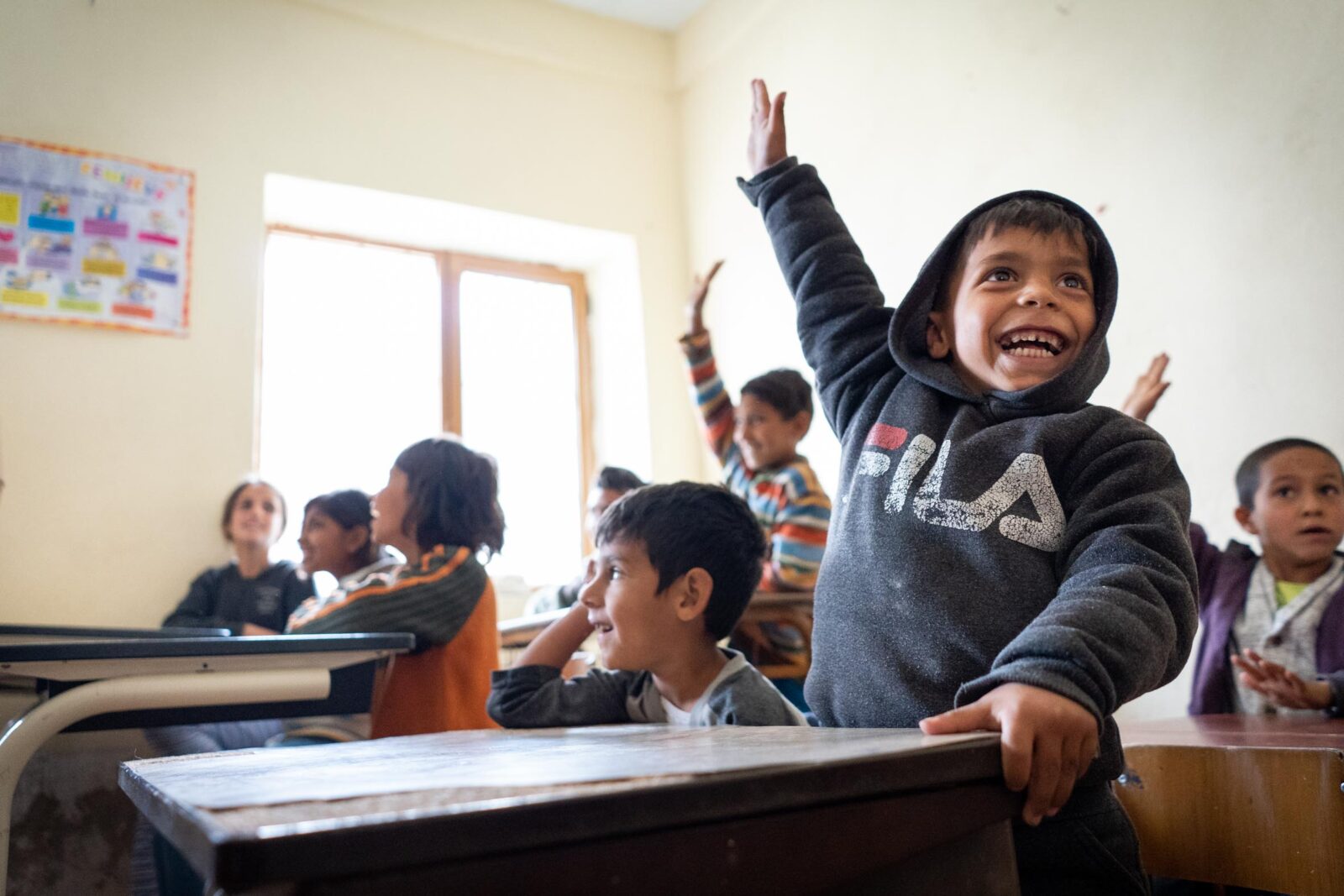
2022
in a nutshell
Total income
€ 6,434,273
Operating in
6
countries
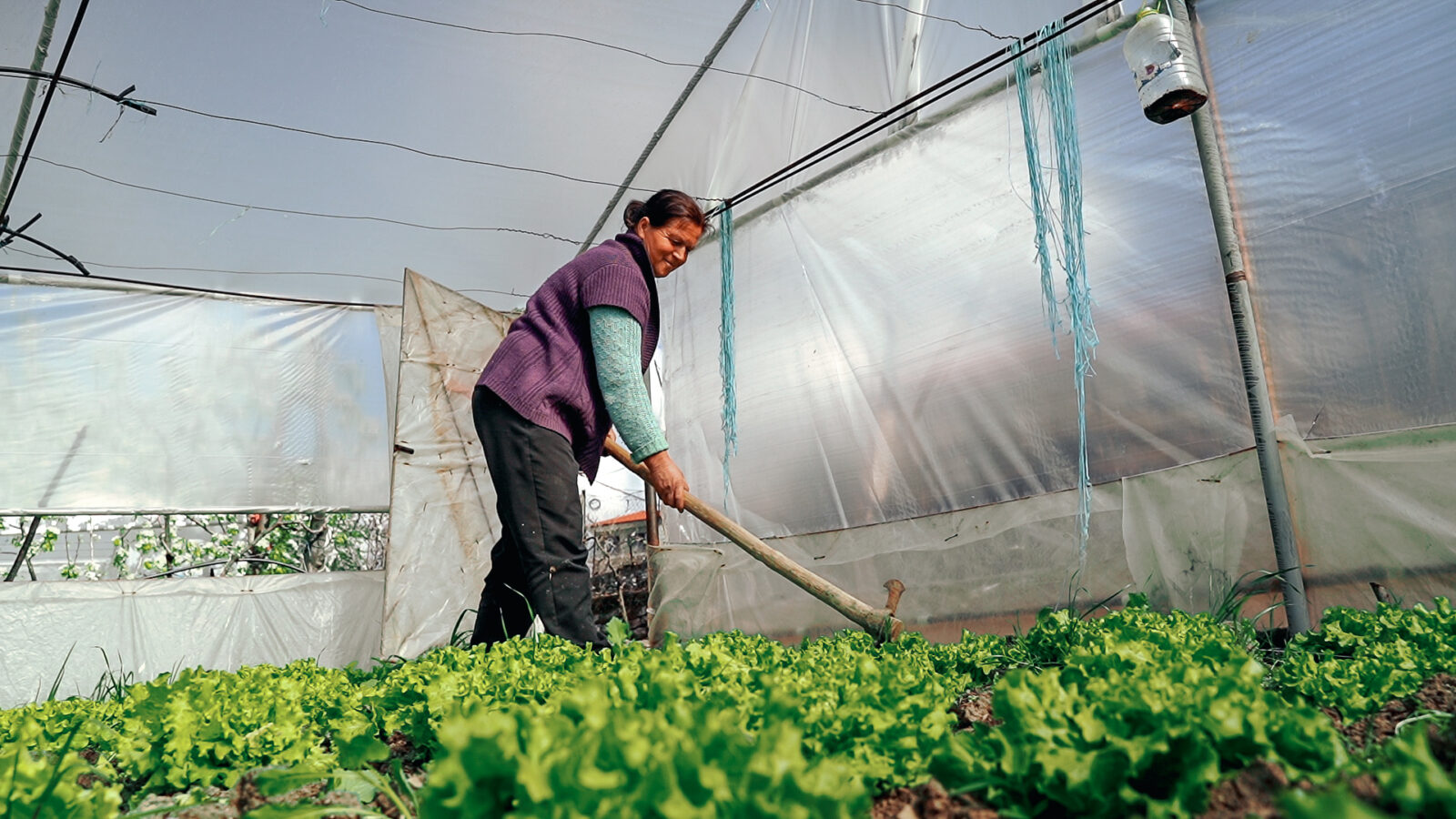
91
projects supported
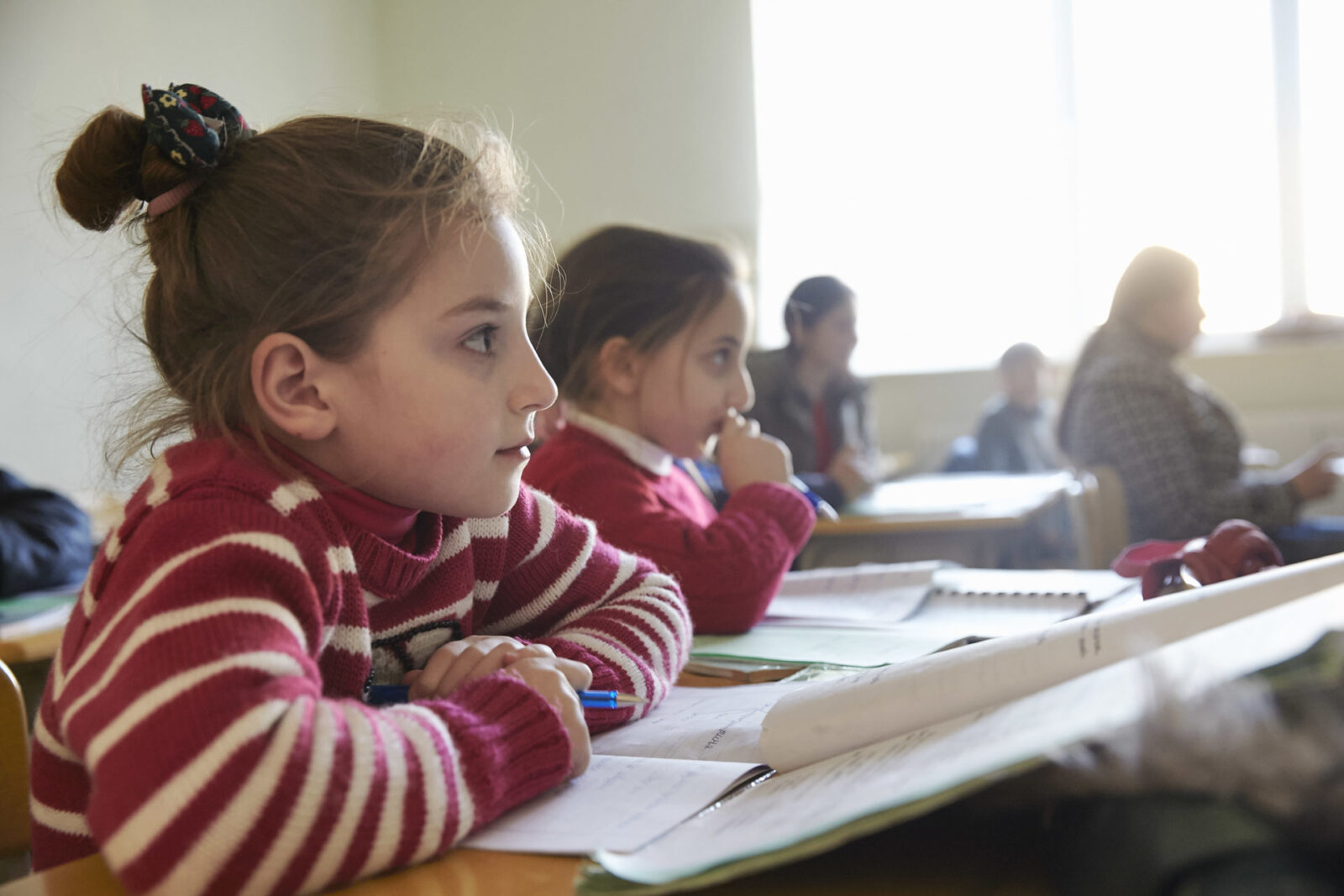
76,105
children, youngsters and adults
received education
2,177
people supported with
work and income
89,366
people received
social care

Called to serve
Chapter 1: Development towards self-reliance
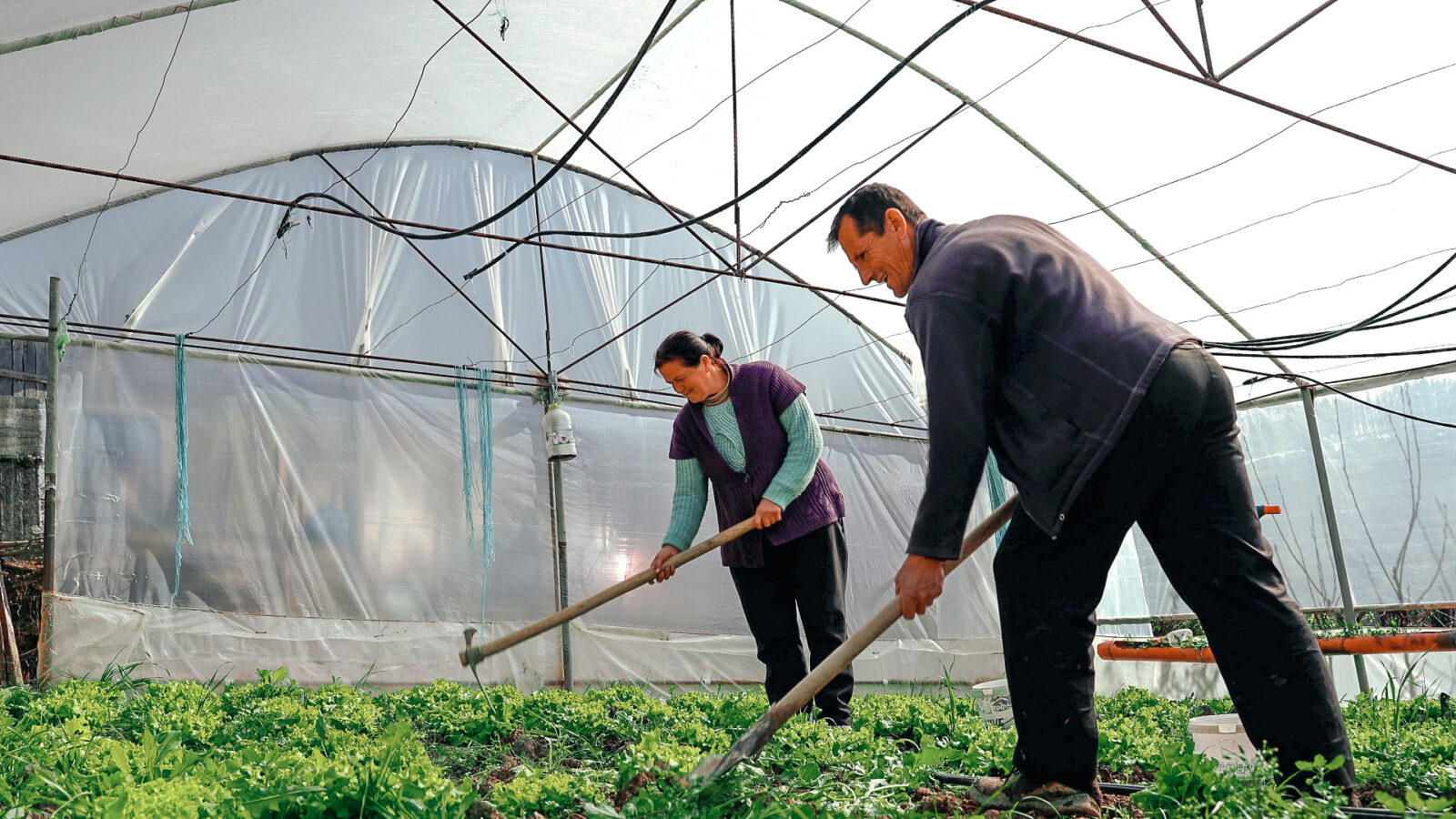
Chapter 1
Development towards self-reliance
1.1 Vision, mission, and core values
![]()
The name of our organisation is based on the Bible story written in Acts 16: 9-10. Paul had a vision at night: he saw a Macedonian man standing there and begging, ‘Come over to Macedonia and help us!’ After seeing this vision, Paul immediately travelled to Macedonia, because he knew God had called him to preach the Gospel there.
´Called to serve’ is the slogan that summarises the mission and Christian calling of the organisation.
Vision
The Bible calls us to serve in this broken world. God wants us to care for our neighbours who live in vulnerable circumstances.
Mission
Together with local partner organisations, we help our neighbours who live in poverty, in order to enable them to develop and live a worthy life. In doing so, we pay attention to all aspects related to human existence.
Core message
Providing a hopeful future for people in vulnerable circumstances.
Core values
Based on our vision and mission, we work from the following core values:
Commitment
We work in God’s Kingdom in an attentive, caring and loving manner. We work from an awareness of responsibility and a passionate involvement with each other, our partners and our volunteers. We have a focus on people and are committed to achieve the results agreed upon.
Entrepreneurship
Our entrepreneurial attitude is characterised by a hands-on approach of projects and constant improvement. We continually take initiatives, evaluating what and how things can be improved. We see opportunities for working more efficiently and turn these opportunities into actions. In addition, we stimulate our partners to see opportunities for organisational development, so that the impact of aid may be expanded. During the projects, we encourage ownership by working on entrepreneurship.
Relationship
Historically, we feel a strong spiritual bond with Christians and churches that have suffered and still suffer from the harsh consequences of communism. We aim to establish personal relationships with individuals, our partners, generations, churches, Christian organisations and companies, both at home and abroad. Cooperation with Christian organisations in the Netherlands is important for an increasing impact of the aid we provide.
1.2 Strategy
![]()
Kom over en help aims to achieve its mission by supporting vulnerable neighbours to improve their degree of self-reliance. The relevant means are education, income generating activities, and social care. For these we cooperate closely with local authorities, Christian organisations (NGOs), churches, and companies, both in the Netherlands and in the countries in which we operate.
Our target areas are located in the formerly communist countries of Albania, Armenia, Georgia, Moldova, Ukraine, and Uzbekistan.

1.3 Directive statements
![]()
Implementing our strategy from 2020, we direct our attention to the areas of education, income generating activities and social care.
The following directive statements guide us into the future:
- ‘Development towards self-reliance’ has become the focus for Kom over en help, in relation to our partners, and for our projects and budget.
- Kom over en help continues to cooperate with local partners in the countries where we currently work, but we are open for expansion to other countries. Kom over en help works in the formerly communist countries in Eastern Europe and Eurasia and also with Christian partner organisations (churches, non-governmental organisations, companies) that adhere to Biblical norms and values.
- The cooperation with other organisations in the Netherlands is intensified in order to realise our long term mission.
Due to the unfolding situation in Ukraine, we considered the place of emergency aid in our strategy in 2022. Decision-making on this will take place in 2023.
Chapter 2: Programmes and projects
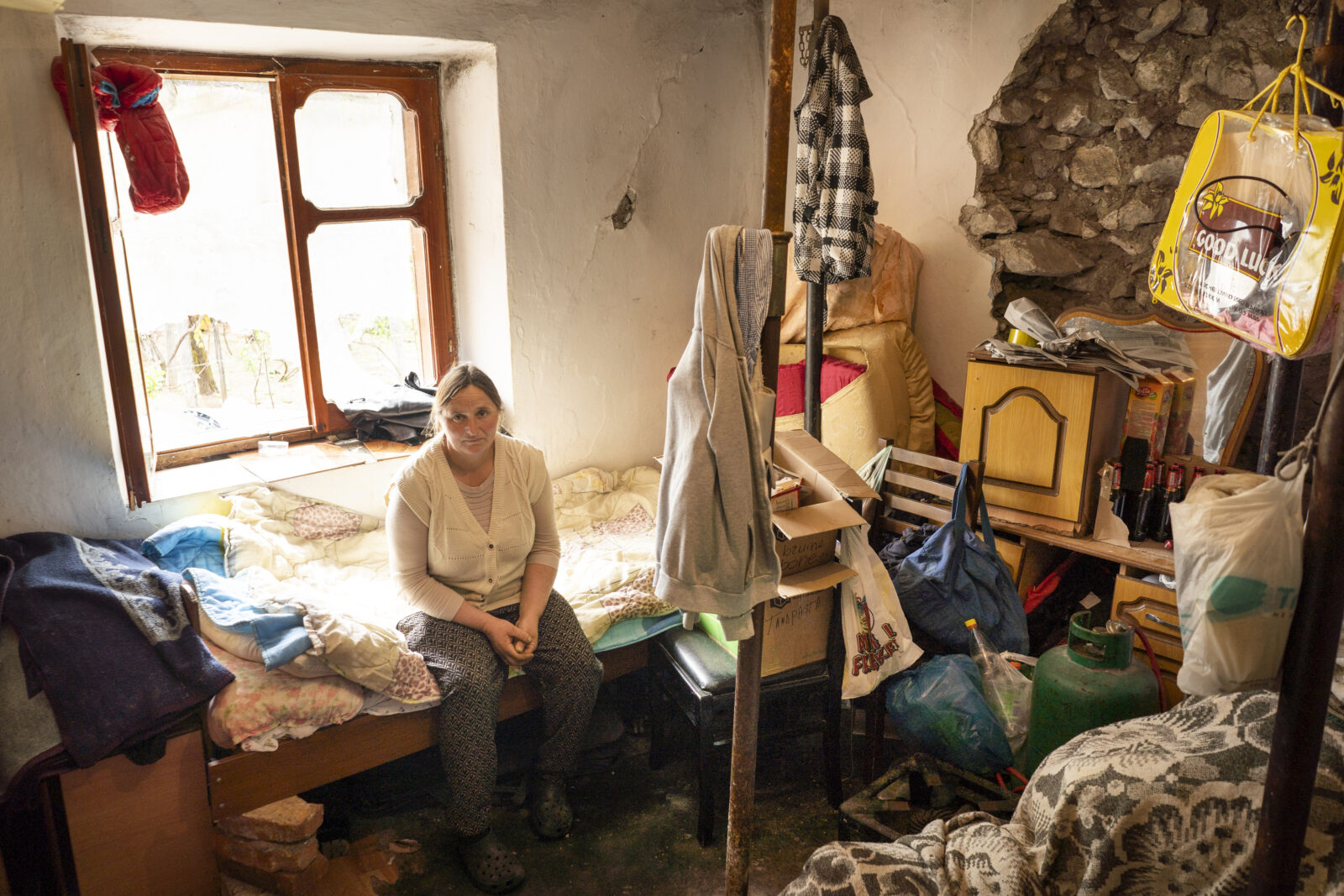
Chapter 2
Programmes
and projects
2.1 Development towards self-reliance
![]()
In order to help vulnerable neighbours to develop and attain self-reliance, Kom over en help makes use of three intervention strategies. These are education, income generating activities, and social care. Integral parts of these interventions strategies are lobbying, advocacy and development of civil society.
Education
Education is an umbrella term consisting of schooling, formation, and child-raising. It comprises a diverse range of activities focused on emotional, spiritual, cognitive, and psychological development of people. Kom over en help focuses on supporting and promoting education, both in schools (formal education) and for extramural activities (informal education). Formally it aims to at providing access to education and enabling pupils, students and adults to complete their programs at regular institutions. Informally, it aims at further developing and improving social skills, social interaction, attitude, and behaviour.
Income generating activities
Income generating activities are all activities that are done by individuals or organisations with the objective of generating income, so that they can provide for their own livelihood. Possible activities are donating money, giving loans or microcredits, providing courses on business plans or financial management, and offering vocational training. Kom over en help focuses on organising income generating activities in order to help the vulnerable neighbour develop towards self-reliance.
Social care
Social care comprises all kinds of care and practical help for children, youngsters, and adults who need additional support because of their age, disability, or circumstances. Care may consist of physical, emotional, or social support and can both be short term or long term. Thus, it may vary from providing medicines or a place to stay to offering a listening ear or creating a network.
Way of working
Kom over en help selects the projects they support via an assessment form. Criteria for selection are for instance the contribution to development towards self-reliance and the link to one or more intervention strategies. Project proposals that fulfil the criteria and fit within the budget are included in the (multi-)annual budget of Kom over en help. During the project period, Kom over en help asks their partners to monitor the project results and to report on these periodically, as well as on the expenses of the budgets made available. Each project concludes with an comprehensive evaluation.
Kom over en help cooperates with 30 different organisations in six countries. As each partner organisation is unique, the cooperation differs for each partner organisation. The way of working together is applied in a differentiated way, focusing on the core values of commitment, entrepreneurship and relationship.
In 2022, we were faced with a major humanitarian disaster in Ukraine, a country where Kom over en help has been active for more than 30 years. In cooperation with our partner organisations, emergency aid was provided to the victims. In connection with this, we reflected on the place of emergency aid within our strategy and developed a policy, which will be set in 2023.
Project expenses per country and per intervention strategy (€)
| Education | Income generating activities | Social care | Total | |
|---|---|---|---|---|
| Albania | 29,556 | 125,416 | 49,838 | 204,810 |
| Armenia | 30,589 | 138,929 | 29,750 | 199,268 |
| Georgia | 102,215 | 0 | 52,350 | 154,565 |
| Moldova | 886,011 | 0 | 320,459 | 1,206,470 |
| Ukraine | 637,276 | 10,000 | 1,473,280 | 2,120,556 |
| Uzbekistan | 88,500 | 0 | 0 | 88,500 |
| Totaal | 1,774,147 | 274,345 | 1,925,677 | 3,974,169 |
2.2 Education
![]()
The intervention strategy Education comprises various projects focusing on the support and promotion of education, formation, and upbringing of children, youngsters, and adults. A large part of these projects consists of day care centres providing children with homework coaching, Bible education, a hot meal, and sociopsychological support. The social skills of thousands of children in all six countries where Kom over en help works are improving, and their behaviour towards other children is changing in a positive way. In Uzbekistan, for example, sports and games activities are used to develop vulnerable young people physically as well as mentally. This improves their (mental) health and teaches them skills that are important for their future. Moreover, they hear about the gospel during these activities.
Several rehabilitation centers for people with addictions are supported in Ukraine and Albania. Even after the outbreak of war in Ukraine, the work in the rehabilitation centers has largely continued. Through the counselling these men and women receive in the centers, they are able to rebuild an independent life in society, without addiction. The shelters for (young) mothers with children also work towards self-reliance. In addition to the daily care and support they receive, they follow parenting training and acquire practical skills, such as cooking and dealing with money. Several of them now live independently, while others continue the program at the center.
In Armenia, eight women were able to attend a sewing course. As a result of the course, they have become skilled and knowledgeable specialists who can earn a living with the newly acquired knowledge and skills.
As a result of the war in Ukraine, the distribution of the educational magazine for children, ‘Noah’s Ark’, had to be changed. Nevertheless, the circulation could be increased by 20,000 copies, as Ukrainian children needed distraction and psychological themes more than ever, for coping with consequences of the war. More than 60,000 children received the magazine, which contained all kinds of instructive stories, tips and creative assignments for coping with the situation. For both adults and children, the magazine has become a rich source of information.
In 2022, Kom over en help supported 36 projects within the intervention strategy of Education and helped a total of 76,105 people.
Number of people supported in the field of education
| Indicator | Realisatie | |
|---|---|---|
| Albania | 1,260 | 1,464 |
| Armenia | 423 | 209 |
| Georgia | 145 | 194 |
| Moldova | 3,388 | 3,291 |
| Ukraine | 48,644 | 70,022 |
| Uzbekistan | 780 | 925 |
| Totaal | 54,640 | 76,105 |
2.3 Income generating activities
![]()
Within the intervention strategy of Income generating activities we support projects with the goal to help individuals, families, and communities to develop towards self-reliance.
The purchase of agricultural machinery enabled a village community in Armenia to cultivate fallow land. 60 hectares of farmland could thus be made ready for the upcoming sowing season. In addition to employment opportunities, this also provides income for dozens of families. The social and economic situation of local communities in the Albanian regions of Tropojë and Korçë has also improved. Enterprising farmers and service providers from the tourist sector are working together and increasing their incomes through greater access to each other’s services and products.
The first fruits of the kiwi farm in Albania were picked during this year. This is the beginning of an income-generating orchard. Most of the work has been completed. Now it is important to make the trees productive and the kiwis should be marketed. The aim is to use this income to support the existing centre for children with disabilities.
In cooperation with World Partners and a local partner organisation in Georgia, works has started to set up a pig farm. The farm aims to have a lasting impact on the community by improving employment and local entrepreneurship, while also strengthening families with a sustainable income. At the same time, it generates income for church activities and social projects in the region.
In 2022, Kom over en help supported 12 projects within the intervention strategy Income generating activities. This helped a total of 2,177 people.
Number of people supported in the field of income generating activities
| Indicator | Realisatie | |
|---|---|---|
| Albania | 954 | 1,175 |
| Armenia | 928 | 941 |
| Georgia | 3 | 8 |
| Moldova | 0 | 0 |
| Ukraine | 100 | 50 |
| Uzbekistan | 3 | 3 |
| Totaal | 1,988 | 2,177 |
2.4 Social care
![]()
The intervention strategy Social care includes a variety of projects aimed at the most vulnerable in society. In the absence of a social safety net, many of them rely on themselves. Although social care is not always a solution to the complex problems these people face, it does really make a difference. (Social) isolation is broken, hunger is appeased and acute health problems are remedied by providing medicines and proper care.
Free transport gives elderly people in Moldova access to healthcare. The (home) care and attention they receive improves their physical and mental health. In Albania, children with disabilities receive speech lessons and occupational therapy, improving their skills.
Hundreds of families in Georgia, Armenia and Albania received food and care packages to meet their daily needs. Many of them are put in touch with social and church workers, allowing them to be included in a network and helped, for example, to apply for grants or identity cards. The visits by social workers and volunteers are a beacon of light and a source of hope for many families.
From the Emergency Fund, established after the Russian invasion of Ukraine in February, many emergency relief projects are supported in both Moldova and Ukraine. Thousands of refugees have been accommodated in churches and other available spaces of partner organisations. Refugees were provided with food, clothing and other necessities. Thanks to food transports from West to Eastern Ukraine, more than 45,000 people were provided with daily food.
Special care is given to children who had to flee and women who had to say goodbye to their husbands and sons. There was also a focus on the psychosocial health of Ukrainians. Hundreds of people, both adults and children, attended online sessions aimed at processing trauma and improving their mental health.
In total, Kom over en help supported 43 projects within the intervention strategy Social care in 2022. A total of 89,366 people were helped in this sphere.
Number of people supported in the field of social care
| Indicator | Realisatie | |
|---|---|---|
| Albania | 525 | 540 |
| Armenia | 85 | 192 |
| Georgia | 343 | 225 |
| Moldova | 10,459 | 13,587 |
| Ukraine | 71,692 | 74,822 |
| Uzbekistan | 0 | 0 |
| Totaal | 83,104 | 89,366 |
Chapter 3: Organisation

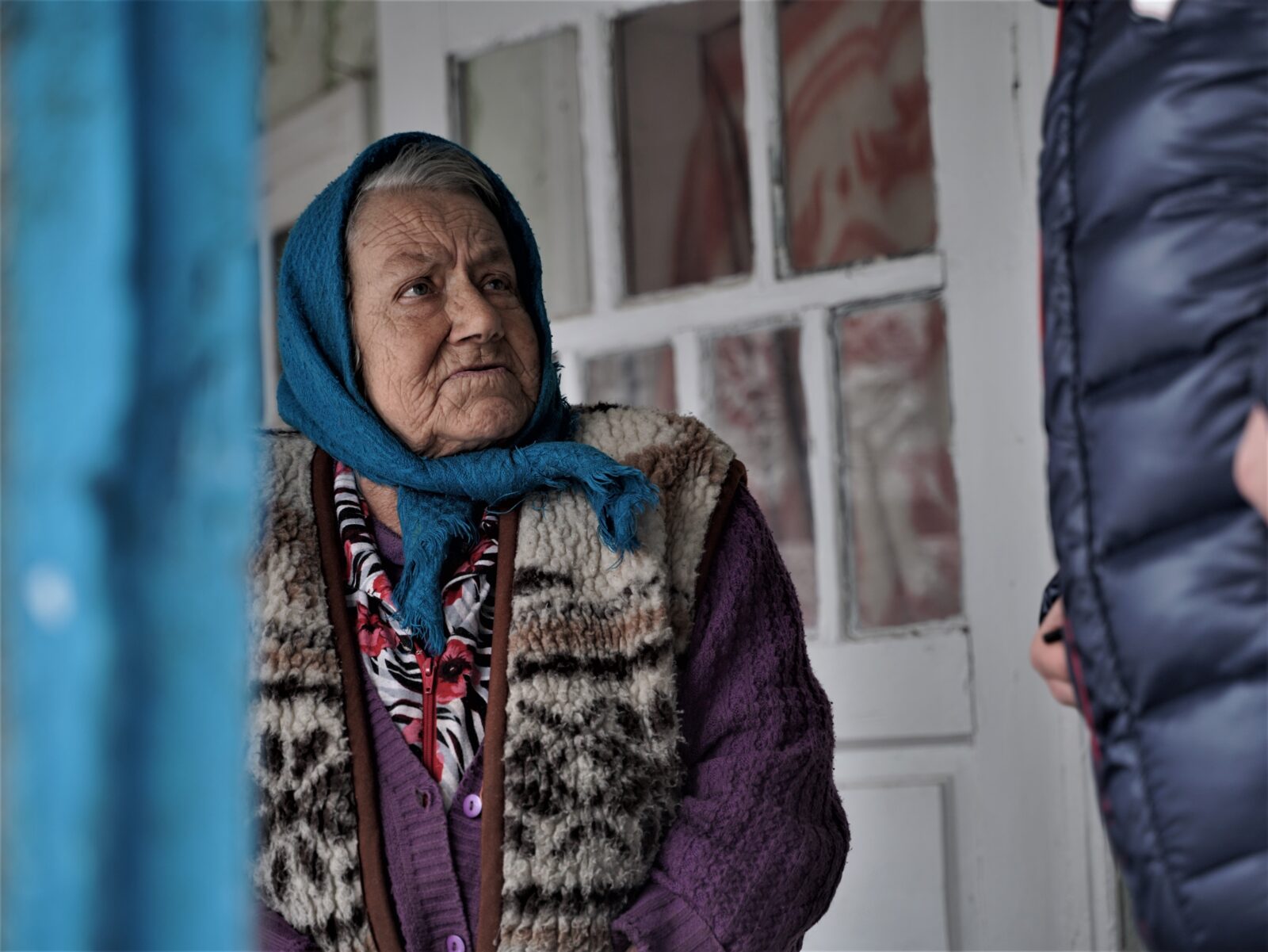
Chapter 3
Organisation
3.1 Cooperation with organisations in the Netherlands
![]()
Cooperation with other organisations is one of the strategic principles for Kom over en help. In order to comply with our long term mission, this cooperation is going to be intensified in the coming years, to fulfil its long-term mission. During 2022, the cooperation between Kom over en help and Dorcas continued. This year, for example, the intention to cooperate with Dorcas in the field of civil society development with social impact was further pursued.
As a consequence of the war in Ukraine, Kom over en help joined a new cooperation, namely the Christian Emergency Aid Cluster (CNC), as quest member.
Kom over en help is a co-initiator of the Christian Platform Eastern Europe (CPOE). This platform aims at cooperation and coordination of organisations, committees and working groups working in Eastern Europe in the field of diaconate and development cooperation. The director of Kom over en help, Gerben Heldoorn, participates in the steering committee. Several employees of Kom over en help are also involved in working groups of CPOE: Anne Bal is involved in the children’s working group, Gerieke Barreveld is a member of the Ukraine working group.
Cooperation within Prisma focuses on reflection on mission, diaconate and development cooperation, (political) lobbying and fundraising. We cooperated on an attachment to the Dutch newspaper ‘Nederlands Dagblad’. In 2022, Gerben Heldoorn, director of Kom over en help, was elected to the Prisma board.
Kom over en help cooperates with church deputies, EO-Metterdaad and organisations that are committed to people with disabilities.
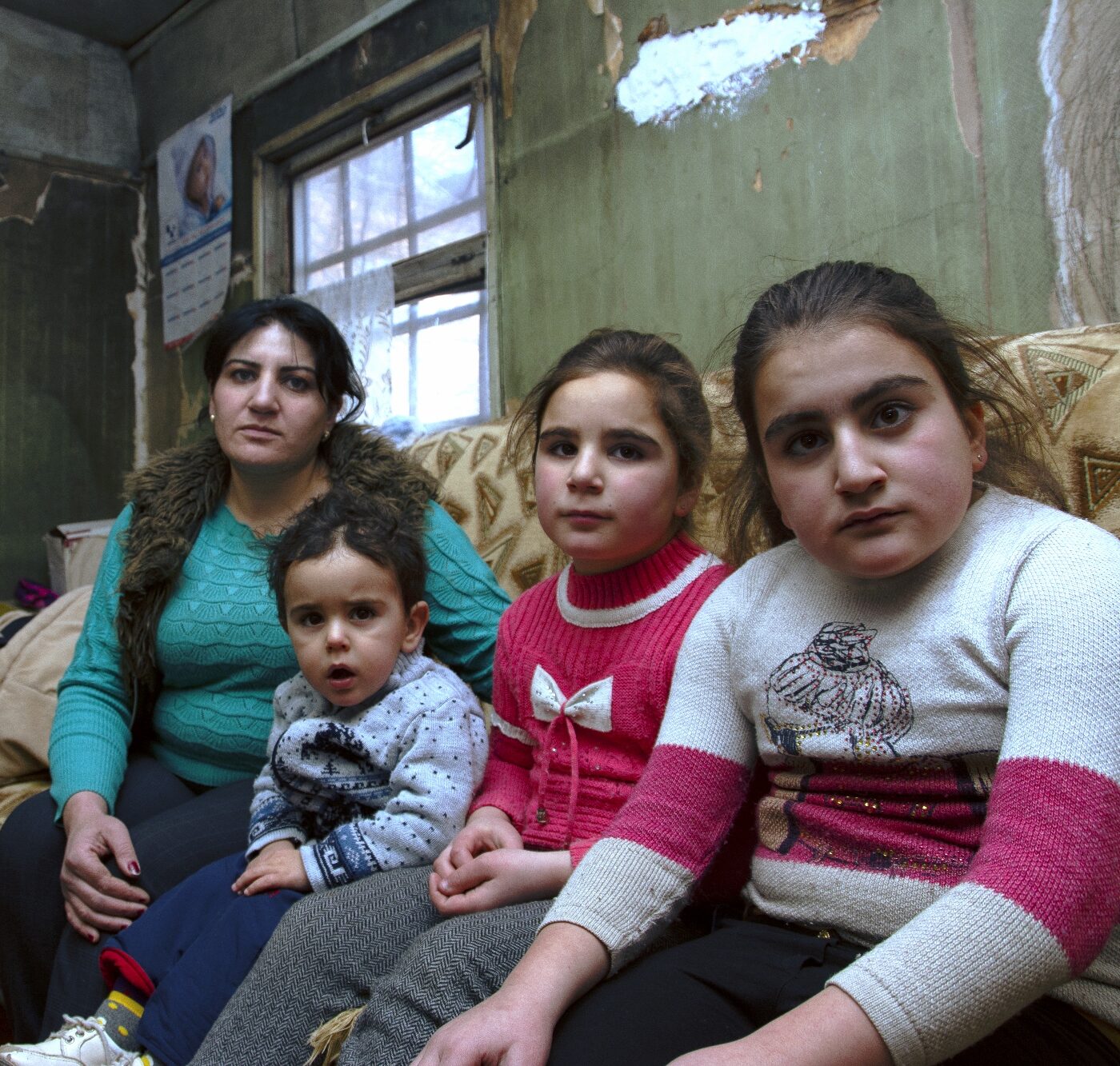
3.2 Organisation
![]()
Kom over en help cooperates with governments, Christian organisations (NGOs), churches, and companies, both in the Netherlands and in the countries where we work. Cooperation is based on a shared Christion vision, presupposes equality and reciprocity, and aims to provide a hopeful future for people in vulnerable situations.
Kom over en help cooperates with partners that heartily share and live the Christian mission to serve our neighbours. Christian NGOs often cooperate with local churches and governments, or are encouraged to do so. There is continual attuning about the policy to be followed by both the partners and Kom over en help. Kom over en help and their partners value trustworthiness and (financial) transparency. We both learn a lot from each other. Kom over en help invests continually in strengthening the quality and the methods of the partner organisations, in order to enhance the impact of the aid that is given.
After the covid pandemic, we made again working visits in 2022. Visits were made to Albania, Moldova, Georgia, Ukraine and Armenia. Furthermore, online partner meetings were organised again.
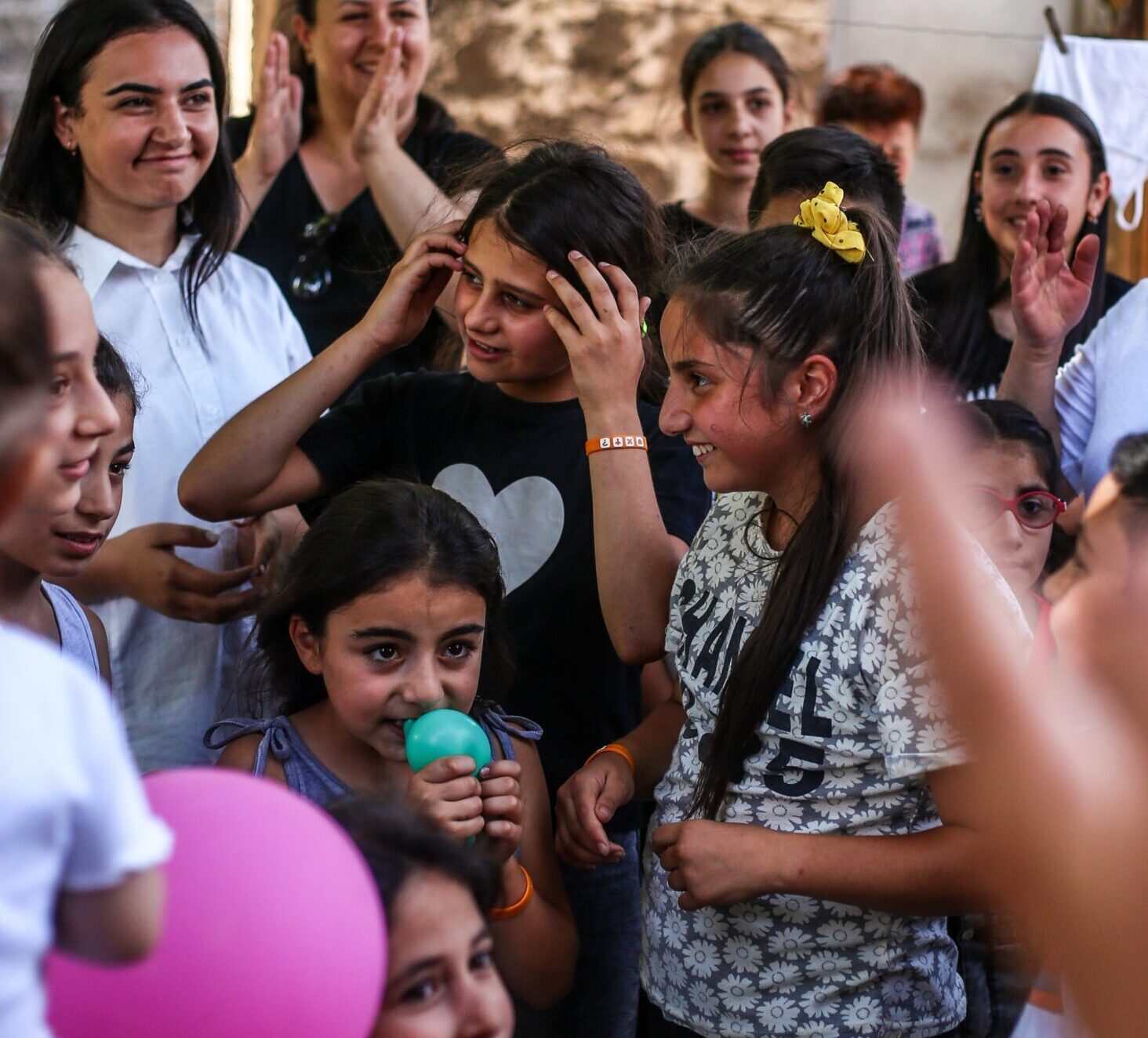
3.3 Staff members
![]()
We have a well-motivated team that performs the daily work. Per 31 December 2022, the job size was 6.3 fte’s for permanent staff and 0.8 fte’s on staff working as freelancers for Kom over en help.
Gerieke Barreveld, Anne Bal and Gerben Heldoorn form together the sub-team Programmes. They maintain contacts with partner organisations.
The Communication and Fundraising subteam consists of three employees: Laurens Sok (policy officer), André Zoutewelle (relations manager businesses) and Nelleke Boonzaaijer (communication and fundraising employee with a focus on private donors). There is a vacancy in this team for an office support officer.
Volunteer coordinator Marijke Gorter has been succeeded by Monica Burger as of January 1, 2023. André Haase is our controller and Marianne van Strien our application manager. Annet van Dijk is administrative staff, responsible for donor administration.

Director Gerben Heldoorn is responsible for the daily leadership in the office. Besides his work for Kom over en help, he is chairman of SGP Woudenberg (political organization) and a member of the evangelisation committee of the Reformed Congregation in Amersfoort.
Within the team of Kom over en help there is a lot of attention for personal responsibility. At the same time, good cooperation and synergy are important to work towards the goals of our organisation, so that we give concrete shape to our core values: commitment, entrepreneurship and relationship.
Since 2013 the organisation has a trustee. Also in 2022, there was no reason for him to take action. A new complaints procedure has been adopted.
Kom over en help uses the labour conditions of the Protestant Church in the Netherlands (PKN), with some adjustments and small changes. The workers are paid according to the job rating system and the salary scales that go with these labour conditions.
The board of the foundation decided on the remuneration policy, the level of remuneration for managing director and the level of other remuneration components. In determining the policy, the so-called ODRP method was used, this is a method specifically designed for government personnel. The remuneration policy is updated periodically.
The director’s total salary costs in 2022 amounted to €101,078 (including employer’s costs of social security contributions and pension costs). There is no bonus regulation. The starting point for the remuneration test is the so-called ‘Basic Score for Director Positions’ (BSD score) within the regulation on remuneration of directors of charitable organisations. For Kom over en help, the BSD score is set at 345 points.
The director’s gross annual income (€80,980) in 2022 is well below the applicable maximum (€105,101). Kom over en help thus complies with the remuneration system for charitable organisations.
Finally, some personnel data:
- The sick leave percentage over 2022 is very low, namely 1,0% (in 2018: 6.1%, in 2019: 8.9%, in 2020: 1.3%, in 2021: 1.9).
- Two staff members are certified as company emergency response officer.
- On 31 December 2022 the average age of staff members was 37.5 years (in
2018: 43.9; in 2019: 43.6; in 2020: 40.4; in 2021: 39.5 years old).

3.4 Volunteers
![]()
The participation of our volunteers shows that people are very committed, which is greatly appreciated by Kom over en help. In total there are around 185 volunteers.
Our volunteers are very diverse in the work they do. Some examples are: processing changes in our donor administration, collecting and transporting clothes, organising activities and making photos and videos.
It is important to get to know all volunteers individually, so that they can be activated in the right place and at the right time; and so that each volunteer can receive adequate support. The volunteer coordinator fulfils this task together with the team.

3.5 Board
![]()
The responsibilities and tasks of the board of Kom over en help have been written down in the statutes of the board. According to the statutes, the board is the policy making and supervising body. The statutes contain clauses that prevent intermingling of job responsibilities and dependency conflicts, as required by the CBF-guidelines (i.e. regulations for charity organisations). A comprehensive board evaluation took place in 2021, led by an external consultant. In 2022, a short evaluation took place in a board meeting.
On 31 December 2022 the Board consisted of the following members:
- Mr T.M. (Marc) Holleman, chair
Owner of Drieklomp Financieel Adviseurs.
- Drs. J.M. (Jan-Marc) Stam CPC, secretary
Director Finance & IT for the foundation of ZOA, deacon Hervormde Gemeente (~Reformed Congregation) in Veenendaal.
- Drs. A.P. (Ton) de Jong, treasurer
Principal Credit Riskmanager ING Bank, deacon of Christelijke Gereformeerde Kerk (~ Christian Reformed Church) in Noordeloos, chairman of the Board of Trustees for RMU, member of the Investment Comité Fair Factory Development Fund (of Incluvest, Stichting Woord en Daad).
- Mr F.J. van den Bunt, member
Eartly retired, manager of community home Bij Elim Amersfoort, member team Vroeg Eropaf (~Early detection) Amersfoort, volunteers ANWB AutoMaatje (~ RAC) Leusden.
- Mr J. (Jaap) van Dam, member
Independent communications/PR advisor, chairman of Youth Council of the Hervormde Gemeente (~Reformed Congregation) in Woudenberg.
- Ms E.M. (Ellen) van den Hil MPH, member
Programme-manager of the Salvation Army, member of the Board for TAK Foundation (Kenia), member of the advisory committee for Effata (Nigeria/Guinee-Bissau), member of the missionary committee of the PKN Sliedrecht, member of the Board for Van Rijswijk Fonds.
- M.P. (Maria) de Jong-de Kruijf, member
Legal advisor on youth protection at the Ministry of Justice and Security, lecturer in the Juvenile Law Department at Leiden University, secretary of complaints committee Eleos, member of the supervisory board for the Driestar-Wartburg.
The managing director is supported by a number of advisory committees: the policy committee, the financial committee, the committee for cooperation with other organisations, and the workers’ committee.

3.6 Committee of recommendation
![]()
On 31 December 2022 the committee of recommendation consisted of the following members:
Rev. G.J. Baan, Mijnsheerenland; Rev. G. Gerritsen, Barneveld; Rev. J. Joppe, Barneveld; Rev. M. Krijgsman, De Beek-Uddel, Rev. E. van den Noort, Nijkerk; Rev. H. Polinder, Urk.
Chapter 4: Financial results, financial policy, and social values and requirements

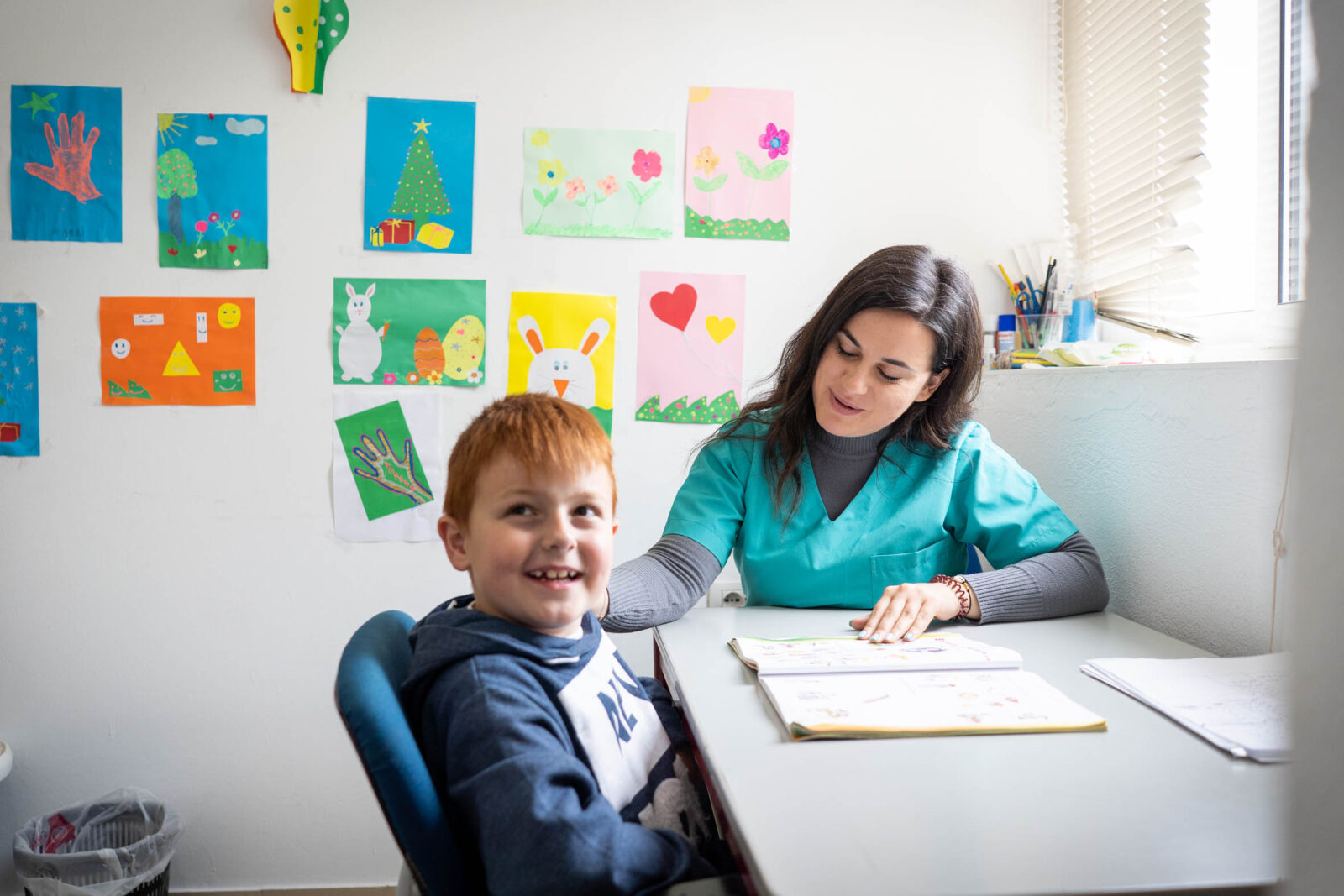
Chapter 4
Financial
results,
financial policy, and social values and requirements
4.1 Results 2022
![]()
Realisation 2022 versus budget 2022
The balance of the statement of incomes and expenditures for 2022 is €1,321,074 positive, while they were budgeted at €223,000 negative.
The sum of incomes in 2022 – including financial benefits – is €1,887,579 higher than budgeted. The sum of the expenses in 2022 is €343,505 higher than budgeted.
The large positive balance of income and expenses is related to the incomes from the emergency fund for Ukraine, amounting to €3,221,986. The breakdown of the incomes in 2022 between regular incomes and the incomes from the emergency fund for Ukraine are shown in Annex 1, ‘Budget 2023’.
Actual 2022 versus actual 2021
The total incomes in 2022 were substantially higher than in the previous year, largely due to the income from the emergency fund for Ukraine.
We are grateful to the Lord God for the many and generous donations received in 2022, so that we – trusting in Him and aware of our dependence on Him – are able to continue to serve and encourage our neighbours in the countries where we work, through words and actions.
The following overview shows an overview of the target groups for the general donations. The general donations concern the incomes raised excluding inheritances, incomes from EO-Metterdaad and incomes in kind (such as clothing sales).
General donations 2022
| Actual 2022 | Budget 2022 | Actual 2021 | |
|---|---|---|---|
| Target group | |||
| Private donors | 2,764,958 | 2,252,000 | 1682,187 |
| Youngsters | 10,000 | 20,000 | - |
| Companies | 839,529 | 715,000 | 491,487 |
| Churches and societies | 682,762 | 342,500 | 176,817 |
| Committees and work groups | 179,731 | 150,000 | 135,897 |
| Foundations and assets funds | 428,296 | 315,000 | 133,170 |
| Education | 205,521 | 100,000 | 31,215 |
| Total | 5,110,797 | 3,894,500 | 2,650,773 |
| Comittees and work groups | |||
| Vino si Vezi (Come and See) in Woudenberg | 88,000 | 60,000 | 60,000 |
| Friends of Zhitomir in Sliedrecht | 28,000 | 40,000 | 28,000 |
| Work group Bunschoten | 52,802 | 36,000 | 41,518 |
| Local committee Alblasserdam | 8,000 | 11,000 | 5,500 |
| Other | 2,929 | 3,000 | 879 |
| Total | 179,731 | 150,000 | 135,897 |
- The number of kilos of clothes collected during 2022 was 208,870, over 6% more than during 2021. The price per kilo averaged around €0.55 during 2022. At the end of 2022, it was €0.60.
Actual 2022 versus budget 2022
| Actual 2022 | Budget 2022 | Difference | |
|---|---|---|---|
| Revenues | |||
| Private donors and youngsters | 2,774,958 | 2,272,000 | 502,958 |
| Legacies | 84,537 | 90,000 | -5,463 |
| Companies | 839,529 | 715,000 | 124,529 |
| Other non-profit organisations | 2,627,911 | 1,373,000 | 1,254,911 |
| Clothing sales | 107,338 | 100,000 | 7,338 |
| Total | 6,434,273 | 4,550,000 | 1,884,273 |
| Expenses | |||
| Spent on programmes | 4,658,729 | 4,299,610 | 359,119 |
| Acquisition costs | 309,477 | 305,590 | 3,887 |
| Costs for management and administration | 143,299 | 162,800 | -19,501 |
| Total | 5,111,505 | 4,768,000 | 343,505 |
| Financial income and expenses | -1,694 | -5,000 | 3,306 |
| Results income and expenses | 1,321,074 | -223,000 | 1,544,074 |
- The planned expenditures were almost all implemented.
- Awareness-raising and recruitment costs were slightly higher than budgeted, mainly due to fundraising costs for the emergency fund for Ukraine.
- Management and administration costs (including salary costs) were lower than budgeted.
4.2 Expenses Ratios
![]()
| Actual 2022 | Budget 2022 | Actual 2021 | |
|---|---|---|---|
| a. Expenses acquisition to acquired revenues ratio | |||
| Acquisition costs in % of the acquired revenues | 4.9% | 6.9% | 10.4% |
| b. Expenses to revenues (gross) ratio | |||
| Expenses for targeted goals in % of the total revenues (including allocation of costs) | 84.3% | 94.5% | 88.3% |
| c. Expenses to income (net) ratio | |||
| Expenses for targeted goals in % of the total income (excluding allocation of costs) | 74.6% | 82.6% | 71.2% |
| d. Expenses for target to total expenses ratio | |||
| Expenses for targeted goals in % of the total expenses | 91.1% | 90.2% | 84.9% |
| e. Expenses management and administration ratio | |||
| Management and administration costs in % of the total expenses | 2.8% | 3.4% | 4.7% |
Notes
a. The acquisition ratio is significantly lower than budgeted, due to the substantially higher incomes, at almost the same costs of acquisition. The same applies to the comparison of the 2022 acquisition ratio with that of 2021.
b. Unlike previous years, the expenditure ratios of incomes (gross and net) have been calculated taking into account the change in the designated funds projects. This leads to a purer ratio, as this way there is “matching” between expenditures and incomes.
c. The expenditure ratios of incomes (gross and net) came out lower compared to the budget, as incomes increased relatively more than expenditures.
d. The expenditure ratio of expenses was higher than budgeted and higher than previous year, as expenditures on our objectives increased, with almost unchanged costs of the own organisation.
e. The same applies to the lower management and administration cost ratio.
4.3 Policy for reserves and funds
![]()
The policy is to keep reserves and funds as low as possible. After all, donations are given in order to spend. Of course, sufficient reserves must also be maintained for the continuity of the organisation.
Furthermore, the incomes from inheritances can only be spent after being credited to the bank account, especially for larger amounts. This is to avoid liquidity problems. Until they can be spent, these revenues are part of the continuity reserve.
4.4 Policy on investments in funds
![]()
Our policy aims to keep the amount of available cash as low as possible, for donations are meant to be spent. Every year about 35% of the private donations are received in the fourth quarter, and from these about 50% in the month of December. Therefore, the results at the end of the year do not reflect the actual cash flow during the year.
In 2007, the Board decided on the following:
- Funds may not be entrusted in investments, but should only be entrusted without risk such as in current accounts, savings accounts and short term deposits. According to the deposit guarantee guidelines, savings are guaranteed up to € 100,000 per bank.
- Funds may be fixed for maximally 60% and for a period of maximally one year, counting from 1 January of that year; the other funds should be payable on demand.
All cash is in bank accounts that are payable on demand.
4.5 Project expenses: reporting and checking
![]()
There is monitoring on how project funds are spend by local partner organisations. The central questions here are: are the target groups reached and are the goals achieved as agreed? Control processes are established, reporting is done, audits are done, checks on accounts are made during working visits and reporting moments, and beneficiaries are visited.
In principle, the only way of funding our partners is directly via bank transfers. Where this is not safe, we make use of other parties that guarantee the payment. A last option is that we pay people in cash, while taking into account the local customs rules. Partners use specific financial sheets to report on how they spend the financial support they received. Periodical checks on the spot provide insight in the implementation and the progress of the support received. The impact of the support is measured through consultation of the recipients, which provides insight in its effectivity. External audits check the finances of partner organisations annually. This way we are accountable to our donors and funds.
New project proposals are critically reviewed to examine whether they fit within our policy framework, comply with our quality criteria, and fit within our budget. Starting a cooperation with new partners and/or ending partner relationships can only be effectuated on the basis of the partner criteria and after a decision of the board.
Together with our partners, Kom over en help continues to work on quality improvement. This mainly concerns the effectivity and the impact of our programs.
Since 2020, we apply more differentiation in our cooperation with partners, partly instigated by the results of an evaluation tool for organisational development. We differentiated in frequency of reporting and in supervision for organisational development.
4.6 Corporate control
![]()
A corporate controller has been appointed to examine the present procedures and guidelines of the most important and critical processes within the financial-administrative organisation for operation and implementation. The processes have been laid down in the Handbook of Administrative Organisation and Internal Control (AO/IC).
In 2022 all internal processes were examined. These included:
- Xperience travels and school campaigns;
- periodical gifts and specific donations;
- project proposals;
- checking and registration of expended funds;
- financial reports;
- expenses and purchases;
- legacies;
- direct debits;
- money orders;
- cash expenses and management cash;
- bank payments to the countries in which we work.
4.7 Risk management and reporting
![]()
The board supervises the implementation of the policy. Internal auditing and (semi) annual checks by the registered accountant ensure the reliability of the implementation of the procedures, the recording and processing of the revenues and gifts, and the correct accountability of the expenses. Risks in the areas of finances, strategy, reputation, expenses, fundraising and supervision play an important role in the implementation of the policy. Timely signalling is of the utmost importance. Each month an overview of revenues is made. This is shared with the team and the board. Each quarter the members of the sub-team Programs discuss the project reports using monitoring plans and financial reports covering the same periods. Analysis of the data may lead to policy adjustments. An extensive risk analysis is made for topics such as: revenues, personnel, fraud and corruption, and reputation, including a financial translation of the risks.
On the basis of the annual risk analysis, each year the level and amount of the continuity reserve is determined. The most important risk areas and measures taken are:
- Decrease of revenues. Risk: less revenues, adjusting of budget. Chances are average, the impact is huge.
Controlling measures taken: policy on fundraising, monthly revenues analysis, promising less to partners than budgeted, postponing expense of working budgets - Damaged reputation. Risk: loss of donors. Chances are small, the impact is huge.
Controlling measures taken: guarding identity, transparency, accreditation, communication policy, procedure for complaints. - Partners. Risk: target group is not reached, fraud. Chances are average, the impact is huge.
Controlling measures taken: examining of partner beforehand, annual evaluation of projects, both substantive and financially, demanding external audits from partners, annual working visits.
4.8 Certificate Acknowledged Charity (CBF)
![]()
The Acknowledgement Regulations for Charities (CBF) was introduced in 2016. This allows donors and other public stakeholders to see at a glance whether all quality requirements are met and things are in order. The CBF is the independent regulator and checks whether charitable organisations comply with the standards of the acknowledgement regulations. Kom over en help has a CBF recognition: “The recruitment for and expenditure of funds by the Kom over en help foundation meets the standards of the acknowledgement regulations. The foundation may call itself ‘acknowledged charity’,” the certificate states. Having an accreditation is a condition for membership of Goede Doelen Nederland (~Dutch Charities). An annual audit is carried out by the CBF. In 2022, the acknowledgement of Kom over en help was continued for four years.
In various statutes, codes of conduct, guidelines and procedures, Kom over en help has recorded and anchored the principles and requirements of good governance as prescribed by Goede Doelen Nederland. The most important of these have been made public and are visible on the website.
4.9 Social values and requirements
![]()
Kom over en help is committed to the social mission and objective to serve their vulnerable neighbour.
In addition, the foundation focuses on sustainability, when implementing its policy and investing in projects. In the past the decision was made to increase digitalisation, decrease the use of paperwork, and make a changeover to the purchase of LED-lights.
Furthermore, used clothing is collected and sold on to a purchaser in the Netherlands.
In 2018, the General Data Protection Regulation (GDPR), a European Union privacy law, was introduced. Kom over en help complies with the legal requirements and is thus GDPR-proof. The policy on data safety has been updated and has been recorded in a protocol. A privacy statement protects the rights of all interested parties whose personal data have been processed.
A final aspect relates to the new requirements of the CBF concerning integrity and unacceptable behaviour. This has resulted in the formulation of our integrity policy in 2020.
We have an internal counsellor for confidential affairs. We also drew up agreements with our partner organisations concerning these issues and travelling abroad.
Chapter 5: Our supporters

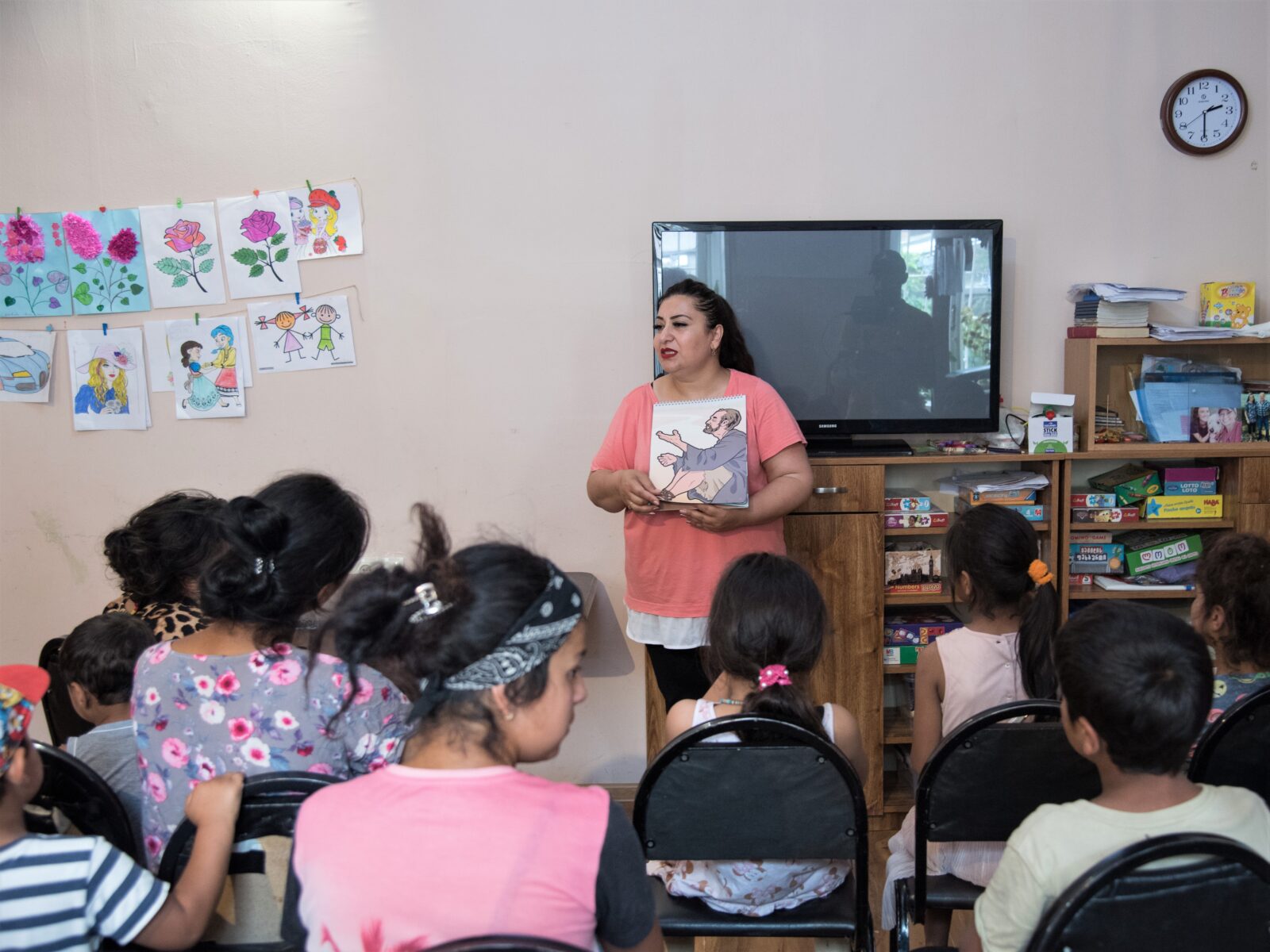
Chapter 5
Our supporters
Giving people in vulnerable circumstances a hopeful future. In 2022, this slogan took on a deeper dimension with the large-scale Russian invasion of Ukraine. Thanks to the loyal support of our supporters, we have been able to make a difference in the lives of many people. We are immensely grateful for their warm commitment. This year too, we have focused on strengthening the relationship and increasing engagement. In this chapter, you will read a summary of the activities undertaken to this end.
5.1 Raising Awareness and Funds
![]()
With our various communication tools, we bring the issues in the countries were we work close to the people. The war in Ukraine is causing a lot of unrest and instability in the region. As a consequence, we found out that our work is very relevant and urgent. This year, the emergency fund for Ukraine, has featured prominently in our mailing program and communications. In the stories we share, there is often a focus on a person from one of our projects. The aim is both to show that aid is necessary and to provide insight into the impact of our assistance. In this way, we involve donors in our work and ask them to contribute so that we can help more people. Awareness-raising and fundraising therefore often go hand in hand.
5.2 Fundraising
![]()
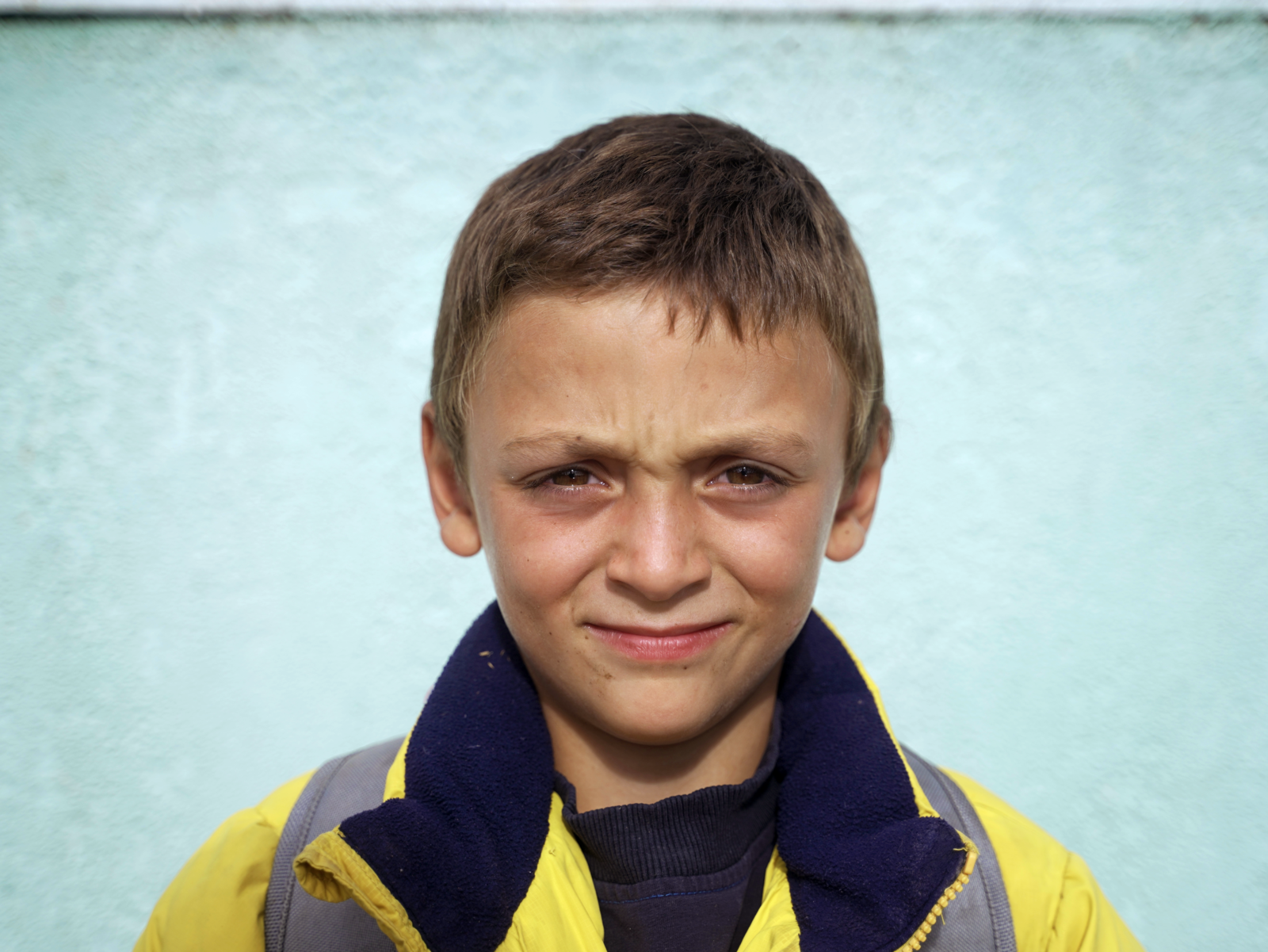
5.2.1 Private donors
Private donors are our largest target group when it comes to fundraising, both in terms of numbers and incomes. For many years, they have made a substantial contribution to our work. Income from this target group amounted to over €2.7 million in 2022. In addition, over €84,500 was received from inheritances.
We welcomed 4,016 new donors in this year. Of these, 2,218 people made a first donation to the emergency fund for Ukraine. Means used to increase supporters include leaflets and online campaigns. New donors follow an introductory program, the so-called donor journey.
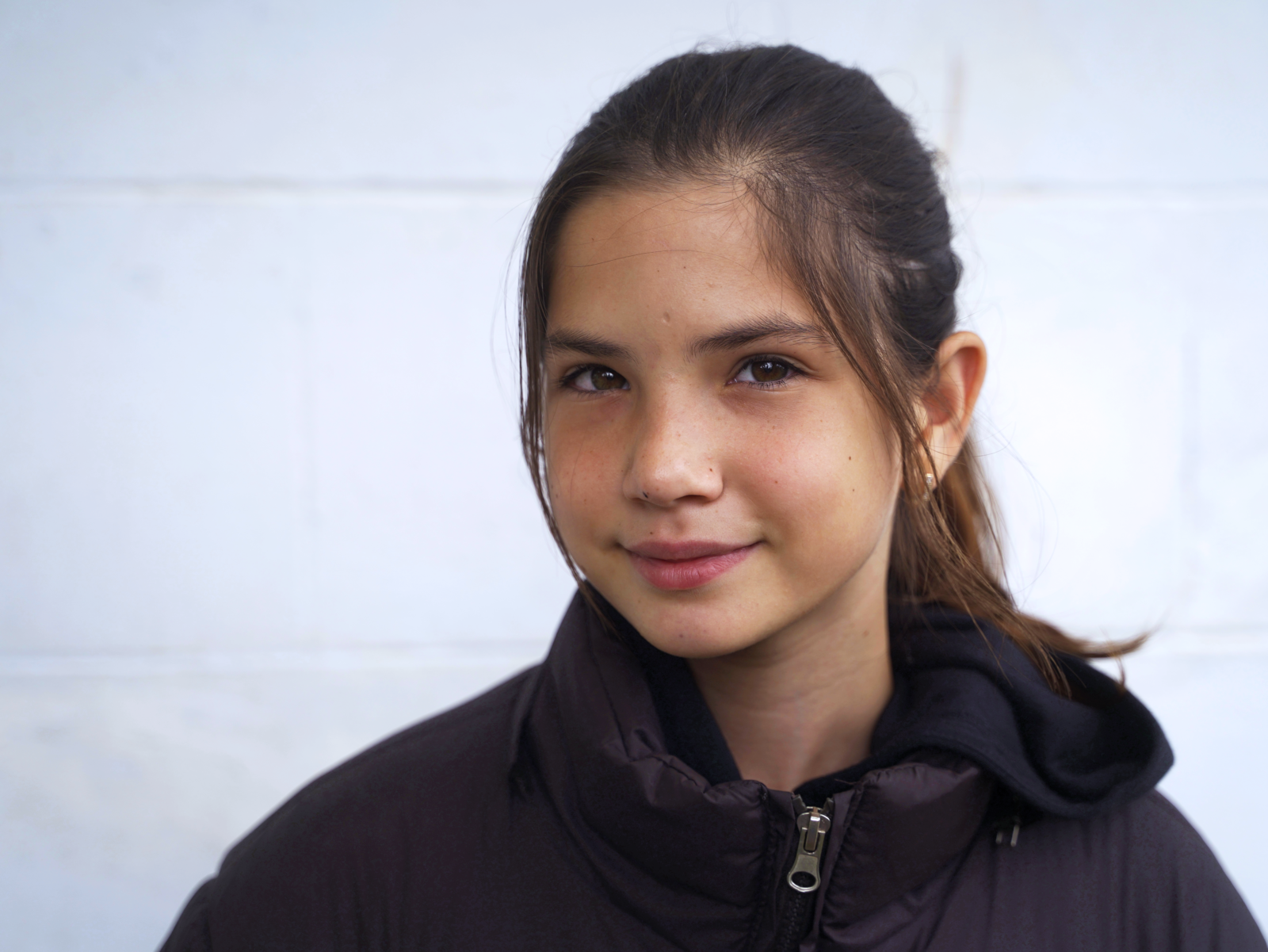
5.2.2 Campaigns
The campaign ‘Working for tomorrow’ did not take place this year because of the war in Ukraine. Instead, several mailings went out for the emergency fund.
The annual winter campaign did start again in October. This campaign focuses on children from Ukraine who receive a hot meal and homework support in the day care centers. The incomes this year were very high.
As part of the winter campaign, an online donor meeting was organized on December 1. Around 200 people watched live with us and even after that, the broadcast was viewed often (a total of 1,500 times). We received positive reactions on this meeting from several donors.
5.2.3 Entrepreneurs
The outbreak of war in Ukraine had a profound impact on projects in that country. A number of income generating activities had to be postponed. We are amazed about the contributions companies made to the emergency fund for Ukraine. This shows the commitment to our vision and mission. A large number of new companies supported us, further growing the business network in 2022.
We had special experiences during a business trip to Armenia organised by CCI (Christian Council International) and two working visits to respectively Albania and Georgia. The meetings with local partners provide a lot of inspiration and encourage us in the work we are privileged to do. We reported in our monthly business newsletter.
Regular incomes from the companies ended up almost at budget level. We are amazed at the commitment and willingness of business owners in supporting our partners’ projects. With the goal: a hopeful future for people in vulnerable circumstances.
5.2.4 Churches
Churches in our address files participated in the regular mail programme.
5.2.5 Schools
Partly due to the situation surrounding the war in Ukraine, we have been guests at primary schools several times to give presentations. In addition, several schools campaigned for both the emergency fund and the winter campaign. We were approached by Jufmeester.nl, a replacement pool for Christian education, asking if we could offer an alternative teaching day in appropriate situations. We have created a day program, where at the end of the day children know what it means to live in vulnerable circumstances. They can additionally indicate what words like serving and charity mean from a Biblical perspective. Form various subjects, a link is made to the countries where we work.
Within secondary education and vocational training schools we have our school program ‘Internationalisation at home’. Here, young people engage in virtual cooperation with people and local partner organisations abroad. Intercultural competences and personal development receive ample attention in this program. Besides a substantive part, it can also be linked to a sponsorship campaign. The program was organised at various schools.
It is nice to note that we have many contacts with secondary and vocational training schools. We hope to organise awareness-raising trips again in 2023 in addition to the schools program.
5.2.6 Youth
We think it is important to involve young people in our work. The Xperience trips are an excellent opportunity for this. In the past year, unfortunately we were able to organise just one trip. This because of the situation around Covid and the unstable situation in the countries where we work.
The challenge for Kom over en help is to engage new generations and to bind them for the future. This will require additional investment in the relationship with young people and innovation in how we seek to connect.
In 2023, the focus will be on travel and the schools program. We are also working on an app that can be used.
5.2.7 Local committees
In the Alblasserwaard and in Bunschoten, volunteers from a working group have been active for Kom over en help. The butter letter campaign in the Alblasserdam was a success. 2,600 butter letters were sold, resulting in proceeds of over €12,000. Over €2,000 was also raised in the Alblasserwaard by selling baby clothes through Schattig Exclusief, www.schattigexclusief.nl.
Working group Bunschoten is grateful for the good results in 2022. The various activities, including the offertory, the Christmas buses action and the action among companies, together raised the nice amount of almost € 57,000. Other localities also campaigned for Kom over en help and raised nice amounts to help people living in vulnerable circumstances.
5.2.8 Clothes collection points
Through the concept ‘Second-hand gives others a new chance’, over €100,000 was collected by 2022. In April and October, attention was given to the collection of clothes through various channels.
With the donated clothes, Kom over en help supports various projects in Eastern Europe. With the proceeds from a full container of clothes, ten children can attend a day care center for a year, or an entrepreneur can get a loan to start a small (agricultural) business. He or she also gets support to develop knowledge and skills.
The donated clothes go to a sorting center in the Netherlands. The sorting centers provide 100% textile recycling in Eastern Europe and elsewhere.
210,000 kilos of clothes were collected in 2022, versus 200,000 kilos in 2021, 150,000 in 2020 (less because of Covid) and 182,000 in 2019. Three new clothing collection points were added. Using leaflets, notices in (church) magazines, flags, posters and a clear webpage with an interactive map, we try to make it easy for people to bring their clothes to one of our collection points. In this way, Kom over en help draw attention to the collection of clothes in various ways. Clothing collection is made possible thanks to the efforts of many volunteers.
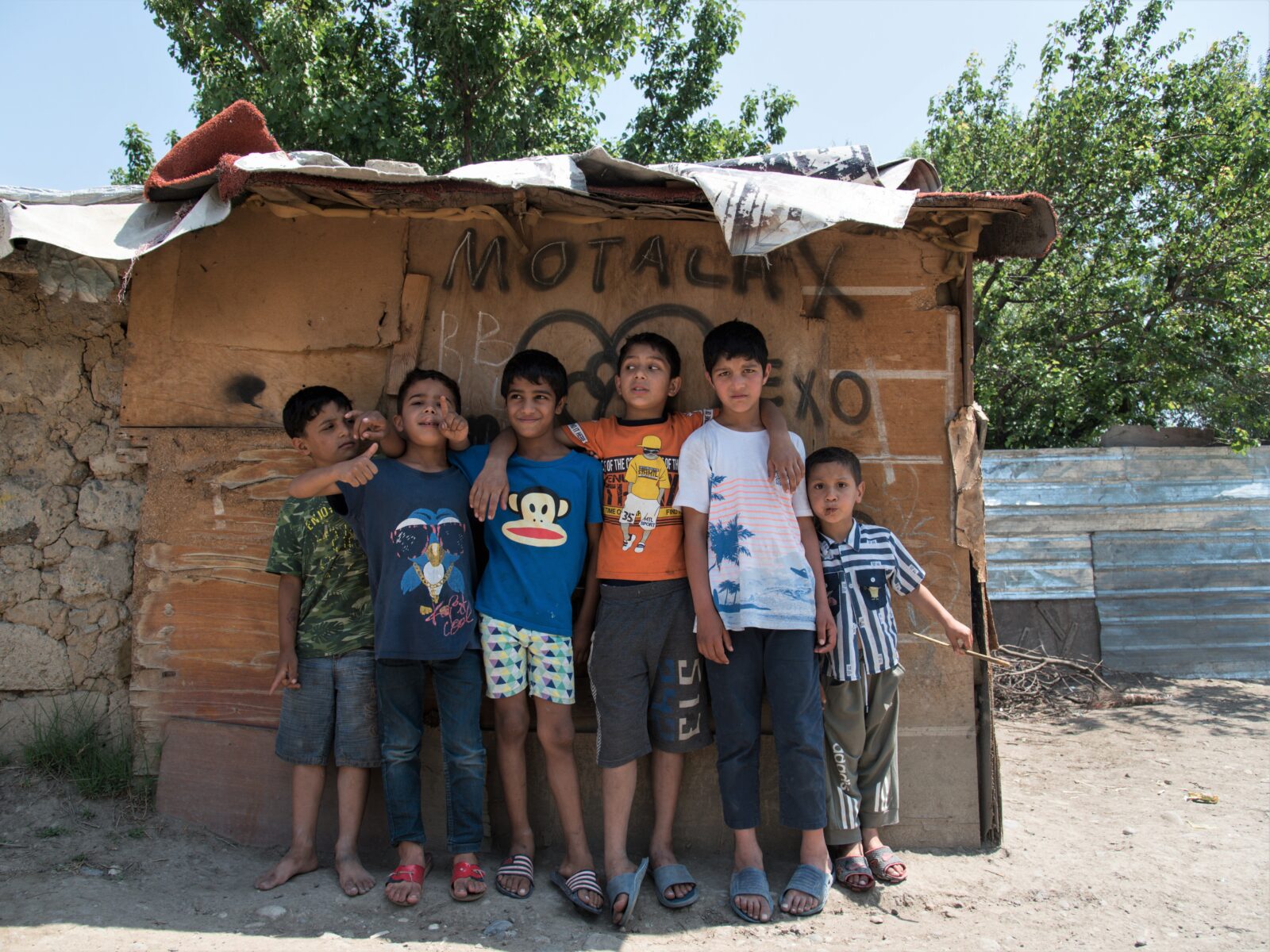
5.2.9 Foundations and funds
Also in 2022, we were able to receive nice donations for both the emergency fund and regular projects. Significant growth was achieved, partly due to contact with new foundations and funds. These foundations and funds receive a mailing or magazine on a regular basis.
5.2.10 Website and social media
In the past year, we worked more integrally to connect channels with each other. Online communication aims to increase our visibility, show our authority and increase engagement with supporters We have been highly visible on our website, social channels and with online campaigns throughout the year. This is well reflected in the growth of visitors and followers. In 2022, we welcomed almost 90,000 unique visitors to the website. This is the largest growth in the past five years. We also see that the number of online donations rose again. The numbers of followers on Facebook, Instagram, YouTube, Twitter and LinkedIn have also grown again. In 2022, there has been a special focus on YouTube. This is because the focus is more on video content. There will be even more focus on this in 2023.
5.2.11 In the media
Increasing our brand awareness is a key objective. In all our communications, it is important that the core message is central: giving a hopeful future to people in vulnerable circumstances (in the countries where we work). In doing so, development towards self-reliance is the main goal.
Throughout the year, we use as many communication tools as possible to highlight our core message and themes. The diversity in content gives us the opportunity to both make an impact and assert our authority.
This year, we have been visible and audible in the media in various ways. Besides publicity around campaigns, we were able to get our story in newspapers ND and RD through among others a partnership with the Christian Emergency Cluster (CNC) and Prisma. We were also able to make a contribution to Family7 and Groot Nieuws Radio.
5.2.12 Procedures for complaints
We see complaints and critical responses from our donors as evidence of commitment. They provide insight into the supporters’ perception of our communication and of our organisation as a whole. Complaints are handled promptly and seriously according to the internal complaints procedure.
We received nine complaints in 2022. Two donors were disappointed by a telemarketing campaign. Several donors expressed their unhappiness about receiving the same mail several times. Two donors took the time to contact Kom over en help to share a difference of opinion regarding communication policy.
One concerned donor was not satisfied with the fulfilment of agreements regarding a debt collection. A volunteer expressed annoyance because there was an action in the residential area, of which the volunteer was not informed.
One donor made a complaint because an old confirmation email was sent. And one donor expressed unhappiness with the course of action when a puzzle ad was filled in.
We are glad that in all cases, we spoke to the donors to resolve the complaint to their satisfaction. In only one case, this resulted in the permanent cancellation of the donorship of Kom over en help.
Chapter 6: The future

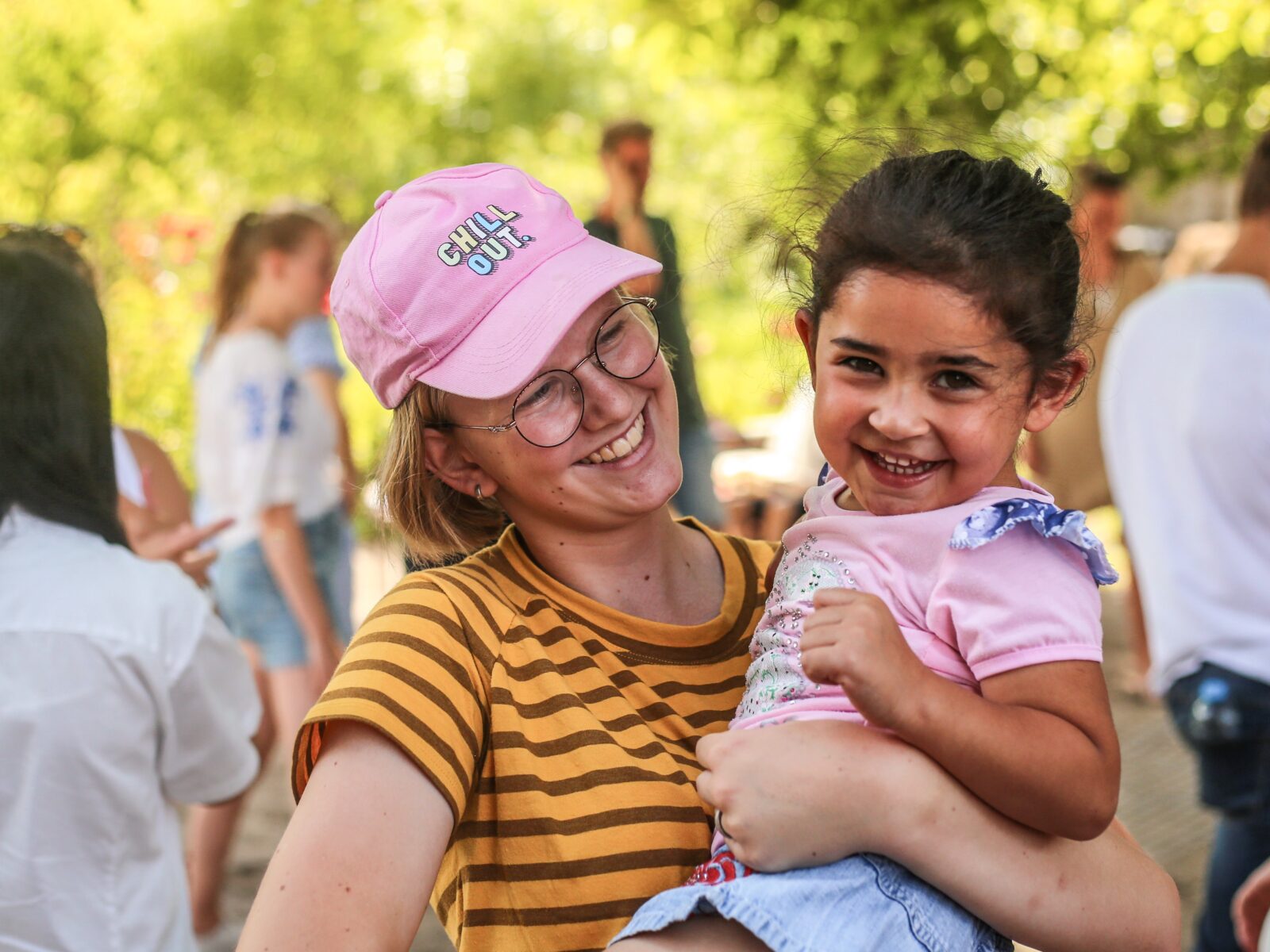
Chapter 6
The future
Also in 2023, we work on our strategy and directive statements.
For 2023 this means among other things that:
- the planned organisational development per partner is implemented and will be developed further.
- emergency aid will be provided in Ukraine.
- half of the partners will make a public relations plan to work on their own fundraising.
- we work on increasing our brand awareness.
- preparations will start for the 50th anniversary of Kom over en help in 2024.
- we focus on retaining donors who gave specifically for the emergency fund for Ukraine.
- we aim for more segmentation in groups of donors, sometimes linked to specific projects.

Kom over en help continues to cooperate with local partners in the countries where we currently operate.
For 2023 this means among other things that we
- work according to the new partner criteria established in this policy plan period.
- set up an organisational plan for and with the partners that do not yet have one.
- pay explicit attention to lobby and advocacy at local, regional, national and European government level in the organisational development plans per partner (in conformity with the partner differentiation).
- organise online partner meetings on financial matters and on the intervention strategies Social Care and Education.
- adopt a policy on emergency aid.
Collaboration with other organisations in the Netherlands is being intensified to fulfil the long-term mission.
For 2023 this means among other things that we:
- intensify cooperation with Dorcas on projects that stimulate social impact and economic development in Moldova and Albania and create a special entity for this, with opportunities for investment and participation.
- cooperate with EO-Metterdaad in various projects.
- join forces within CPOE and Prisma to work on capacity development of the partner organisations. We participate in the steering committee and various working groups. We also participate in the training given to Dutch organisations.
Several working visits and (target group) trips are planned for 2023.
- 7.1 Balans per 31 december 2021 - titel
- 7.2 Staat van baten en lasten 2021 en bestemming saldo
- 7.3 Kasstroomoverzicht 2021
- 7.4 Lastenverdeelstaat 2021
- 7.5 Algemene toelichting op de jaarrekening
- 7.6 Toelichting op de balans
- 7.7 Toelichting op de staat van baten en lasten
- 7.8 Specificatie kosten eigen organisatie
- 7.9 Ondertekening jaarrekening
- 7.10 Bijlagen
Chapter 7: Annual accounts 2022
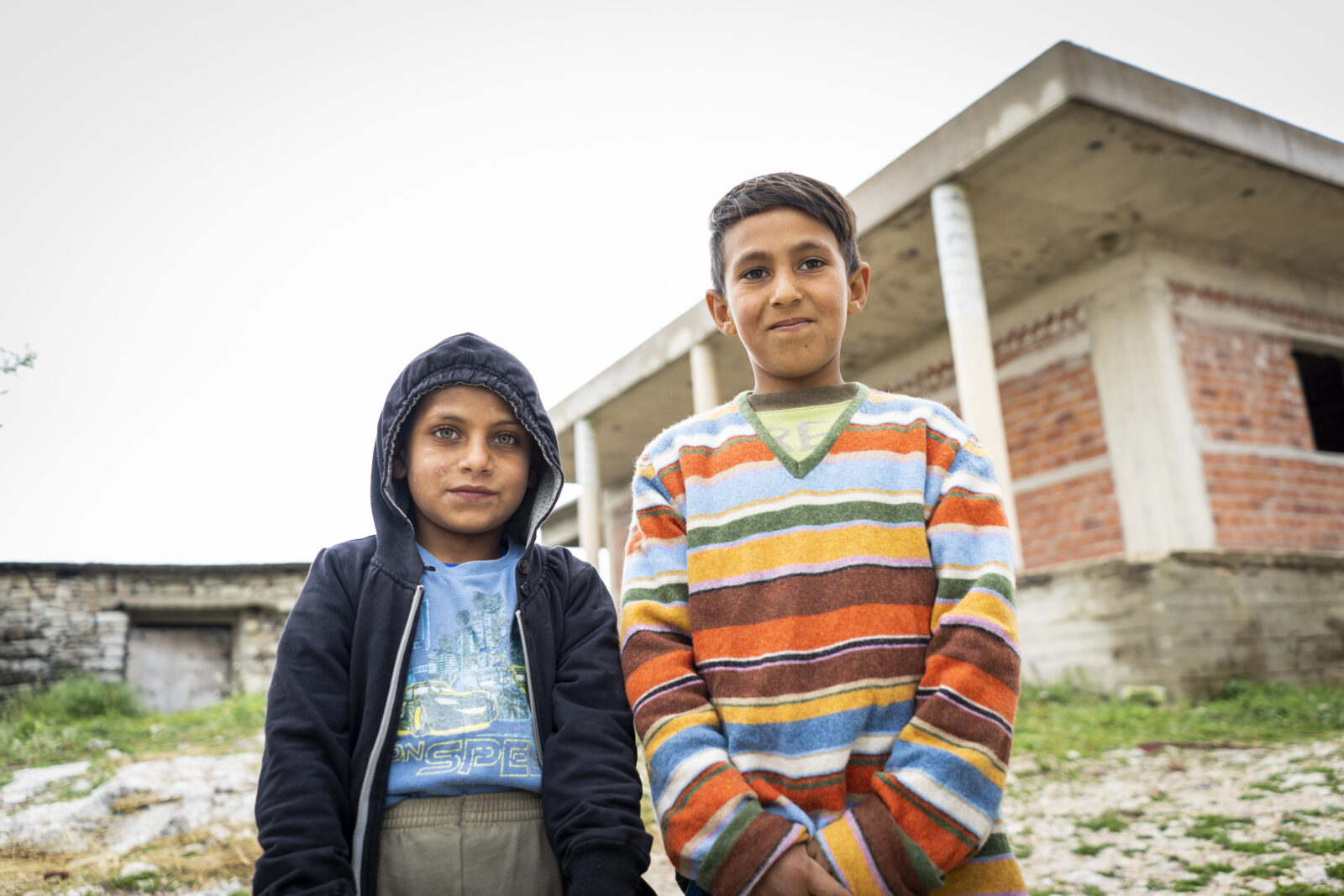
Chapter 7
Annual accounts
2022
7.1 Balance sheet on 31 December 2022
![]()
| 1. Balans per 31 december 2021 | 31 December 2022 | 31 December 2021 | ||
|---|---|---|---|---|
| ASSETS | ||||
| Intangible fixed assets (1) | 85,903 | 127,107 | ||
| Tangible fixed assets (2) | 44,212 | 52,938 | ||
| Financial fixed assets (3) | 10,010 | 44,199 | ||
| 140,125 | 224,244 | |||
| Receivables, prepayments and accrued income (4) | 323,396 | 222,716 | ||
| Liquidities (5) | 2,533,268 | 1,185,577 | ||
| 2,856,664 | 1,408,293 | |||
| Total | 2,996,789 | 1,632,537 | ||
| LIABILITIES | ||||
| Reserves | ||||
| - Continuity reserve (6) | 775,000 | 750,000 | ||
| - Designated reserve emergency aid (7) | 100,000 | 100,000 | ||
| - Designated reserve projects (8) | 614,558 | 226,512 | ||
| 1,489,558 | 1,076,512 | |||
| Funds (8) | ||||
| - Designated fund projects (9) | 1,334,109 | 426,081 | ||
| - Short term liabilities (10) | 173,122 | 129,944 | ||
| Total | 2,996,789 | 1,632,537 |
7.2 Statement of revenues and expenses 2022 and destination net results
![]()
| 2. Staat van baten en lasten 2021 en bestemming saldo | Actual 2022 | Budget 2022 | Actual 2021 | |||
|---|---|---|---|---|---|---|
| REVENUES | ||||||
| Revenues from private donors (13) | 2,859,495 | 2,362,000 | 1,722,681 | |||
| Revenues from companies | 839,529 | 715,000 | 491,487 | |||
| Revenues from other non-profit companies (14) | 2,627,911 | 1,373,000 | 547,554 | |||
| Sum of the acquired revenues | 6,326,935 | 4,450,000 | 2,761,722 | |||
| Revenues in natural goods | 107,338 | 100,000 | 67,929 | |||
| Sum of the revenues | 6,434,273 | 4,550,000 | 2,829,651 | |||
| EXPENSES | ||||||
| Spent on programmes (section 4) | ||||||
| Education | 1,941,591 | 1,175,329 | 1,345,305 | |||
| Income generating activities | 300,238 | 318,837 | 334,840 | |||
| Social Care | 2,107,423 | 1,670,990 | 372,650 | |||
| Not yet promised to partners | 0 | 828,864 | 0 | |||
| Strengthening of awareness and support | 309,477 | 305,590 | 287,722 | |||
| 4,658,729 | 4,299,610 | 2,340,517 | ||||
| Acquisition costs (section 7.4) | 309,477 | 305,590 | 287,722 | |||
| Management and administration costs (section 7.4) | 143,299 | 162,800 | 129,127 | |||
| Sum of the expenses | 5,111,505 | 4,768,000 | 2,757,366 | |||
| Results before financial revenues and expenses | 1,322,768 | -218,000 | 72,285 | |||
| Results financial revenues and expenses (18) | -1,694 | -5,000 | 8,685 | |||
| Net results revenues and expenses | 1,321,074 | -223,000 | 80,970 | |||
| Destination results revenues and expenses | ||||||
| Addition to (+) / withdrawal from(-/-) : | ||||||
| Continuity reserve | 25,000 | 0 | 25,000 | |||
| Designated reserve emergency aid | 0 | 0 | 100,000 | |||
| Designated reserve projects | 388,046 | -223,000 | -224,157 | |||
| Designated fund projects | 908,028 | 0 | 180,127 | |||
| Total | 1,321,074 | -223,000 | 80,970 |
7.3 Cash flow statement 2022
![]()
| 2022 | 2021 | |||
|---|---|---|---|---|
| Cash flow from operational activities | ||||
| Results from revenues and expenses (section 7.3) | 1,321,047 | 80,970 | ||
| Adjustments concerning: | ||||
| Write-offs intangible fixed assets (1) | 53,244 | 39,328 | ||
| Write-offs tangible fixed assets (2) | 21,599 | 22,053 | ||
| Mutation financial fixed assets (3) | 34,189 | 53,600 | ||
| Mutation stocks | 0 | 1,292 | ||
| Mutation receivables (4) | -100,680 | 23,416 | ||
| Mutation short term liabilities (9) | 43,178 | -54,845 | ||
| 51,530 | 84,844 | |||
| Cash flow from operational activities | 1,372,604 | 165,814 | ||
| Cash flow from investment activities | ||||
| Investments intangible fixed assets (1) | -12,040 | -91,306 | ||
| Investments tangible fixed assets (2) | -12,873 | -26,801 | ||
| Cash flow from investment activities | -24,913 | -118,107 | ||
| Net cash flow | 1,347,691 | 47,707 | ||
| Mutation liquidities | ||||
| Liquidities on 1 January (6) | 1,185,577 | 1,137,870 | ||
| Liquidities on 31 December (6) | 2,533,268 | 1,185,577 | ||
| Mutation liquidities | 1,347,691 | 47,707 |
The consolidated cash flow statement provides an overview of the incoming and outgoing cash flows in the course of the financial year. Transactions that did not involve exchange of cash have not been included in this cash flow statement.
7.4 Statement of allocation of expenses 2022
![]()
| Programmes | Education | Income generation activities | Social care | Strengthening of awareness and support | Spent on objective | Acquisition costs | Management and Administration | Actual 2022 | Budget 2022 | Actual 2021 |
|---|---|---|---|---|---|---|---|---|---|---|
| Ratio costs for corporate organisation | 18,3% | 2,8% | 19,9% | 20,5% | 61,5% | 20,5% | 18,0% | 100,0% | ||
| Direct expenses | 1,774,147 | 274,345 | 1,925,677 | 146,276 | 4,120,445 | 146,276 | 4,266,721 | 3,924,000 | 2,026,731 | |
| Allocated costs | ||||||||||
| 1. Preparation and coordination from the Netherlands | 21,733 | 3,361 | 23,589 | 48,682 | 48,682 | 30,000 | 13,259 | |||
| 2. Costs corporate organisation | ||||||||||
| Personnel costs | 101,476 | 15,692 | 110,144 | 113,656 | 340,968 | 113,656 | 99,796 | 554,420 | 575,000 | 528,697 |
| Housing costs | 7,064 | 1,092 | 7,668 | 7,913 | 23,738 | 7,913 | 6,948 | 38,599 | 40,000 | 35,178 |
| Office and general costs | 23,473 | 3,630 | 25,477 | 26,289 | 78,869 | 26,289 | 23,083 | 128,241 | 129,000 | 92,219 |
| Write-off costs | 13,697 | 2,118 | 14,868 | 15,343 | 46,027 | 15,343 | 13,472 | 74,842 | 70,000 | 61,281 |
| Total costs corporate organisation | 145,710 | 22,532 | 181,746 | 163,201 | 489,602 | 163,201 | 143,299 | 796,102 | 814,000 | 717,376 |
| Total allocated costs | 167,443 | 25,893 | 181,746 | 163,201 | 538,284 | 163,201 | 143,299 | 844,784 | 844,000 | 730,635 |
| Sum of the expenses | 1,941,590 | 300,238 | 2,107,423 | 309,477 | 4,658,729 | 309,477 | 143,299 | 5,115,505 | 4,768,000 | 2,757,366 |
This statement indicates the total expenditures allocated to the various programmes:
- direct expenditures;
- costs for preparation and coordination from the Netherlands;
- costs for corporate organisation.
Notes
- The ‘costs for preparation and coordination from the Netherlands’ have been proportionally divided over the expenditures.
- The ‘costs for corporate organisation’ have been allocated according to an allocation ratio. The ratio was established per position on the basis of hours allocated for position-content to the sub-teams of Programs, Communication/PR and Fundraising, and Management and Administration. The level of salary costs was taken into account.
- The allocation of ‘costs for corporate organisation’ to on the one hand ‘Increasing awareness and support’, and ‘Acquisition’ on the other, conforms to the same ratio as applied to the direct costs, i.e. 50/50.
- The allocation of ‘costs for corporate organisation’ to the various programmes was based on the ratio of the expenditures made.
- A more detailed specification of the ‘costs for corporate organisation’ is included in section 8.
- The systematics of the allocation of expenditures remains the same as in the previous year.
7.5 General information about the annual accounts
![]()
General
Stichting Kom over en help (Come over and help)
Stichting Kom over en help is a foundation, with statutory location Nijkerk (Gelderland, Gld.) and actually situated at Beurtschipper 14 – 20, 3861 SC in Nijkerk (Gld). The foundation is registered with the Dutch Chamber of Commerce with number 41172259.
The foundation was established on 7 January 1974 and has the following statutory mission:
- Serving the vulnerable neighbours in Eastern Europe and Eurasia from their Christian calling to show mercy and justice, in partnerships with churches and Christian organisations;
- Building awareness among their supporters of the living conditions of children and families in Eastern Europe and Eurasia.
Principles for annual reporting
The annual accounts 2022 have been drawn up in accordance with guidelines for annual reporting, including Guideline 650 for Fundraising organisations, as published by the Council for Annual Reporting.
The annual accounts are composed based on historical costs, unless otherwise specified. Revenues and expenses are accounted for in the year to which they apply, with the application of matching.
The balance sheet, the consolidated statement of revenues and expenses, and the consolidated cash flow statement contain references to the notes. A subpart of the contents is referred to as ‘section’.
The principles of valuation and results are the same as in the previous year. The annual accounts are in euros, which is the functional currency.
Continuity
In the past year, the war in Ukraine has had a major impact on the world, among others through increased prices of food and energy, culminating in high inflation. Kom over en help received high amounts for the emergency fund for Ukraine in 2022, while other (regular) receipts did not suffer from that.
However, the 2023 budget again explicitly takes into account uncertainties in incomes to be received. For instance, not all budgeted incomes has yet been pledged to partners. In addition, amounts already pledged may be adjusted in case of disappointing revenues.
Principles for valuation and results
Valuation of foreign currencies
Transactions in foreign currencies are valued at current exchange rates on the transaction date. For each balance date, the monetary assets and liabilities are valued in euros at exchange rates ruling at the balance sheet date. Exchange results are included in the consolidated statement of revenues and expenses under the heading ‘Financial revenues and expenses’.
Estimates
When applying the principles and guidelines to the annual accounts, the Board makes various judgements and estimates that may influence the amounts specified in the annual accounts. The actual outcome may divert from the applied estimates
Impairment of assets
At every balance date, an evaluation takes place to see whether there are indications that a fixed asset may be subject to impairment. Impairment exists when the book value of an asset is higher than its fair value; the fair value is the highest of the sale’s value and the company’s value. An impairment is directly included in the consolidated statement of revenues and expenses (under write-offs), with simultaneous depreciation of the book value of the asset concerned.
Principles for valuation
- Intangible fixed assets are valued at historical costs, reduced by the annual write-offs and impairments, if any. The percentage for write-offs is 33.33%.
- Tangible fixed assets are valued at historical costs, reduced by annual write-offs and impairments, if any. The write-off percentages are 20% for transportation, 25% for office inventory, and 33.33% for computer equipment.
- The financial fixed assets, consisting of loans granted, are initially included at fair value. Subsequent valuation occurs via amortised costs, reduced by impairments, if any, and provisions of irrecoverability.
- Stocks are valued at acquisition price, with reduction of provision for unsalability. Due to lack of information, the stocks for collected clothes is valued at nil.
- Claims are initially valued at fair value, usually equal to nominal value. Subsequent valuation occurs via amortised costs, reduced by provisions of irrecoverability.
- Cash is valued at nominal value.
- Reserves and funds are valued at nominal value.
- Short-term liabilities are initially valued at fair value, mostly equal to nominal value. Subsequent valuation occurs via amortised costs.
Principles for results
- Acquired revenues are accounted for as the received amount, without reduction of the costs for corporate organisation.
- Revenues are accounted for in the year in which they are received, are promised by the donor, and can reliably be checked.
- Income received for a specific purpose is subject to a 10% deduction to cover the costs of its own organisation, unless a different percentage has been agreed with the donor. This deduction takes place at the time the funds are spent and is included in the amount spent.
- Legacies are accounted for in the financial year in which they have become known, have been accepted by the beneficiary, and can be reliably checked. The amount can generally be checked at the moment of composing the certificate of allocation, or the accountability report.
- Revenues from other non-profit organisations are accounted for as income to the extent to which the appropriate expenses have been made in the financial year, and the conditions of the other non-profit organisations have been met.
- The expenses to the programmes have been accounted for according to the objectives of the foundation. The expenses have been assigned to the year in which they apply.
- Wages and salaries are accounted for in the consolidated statement of revenues and expenses based on the labour conditions and in as far as they are agreed upon. With the exception of a few additions, Kom over en help follows the guidelines of the ‘Labour conditions regulations Clerical Staff (AKM)’ of the Protestant Church in the Netherlands (PKN).
- Pension regulations have been accounted for according to the obligations approach, based on the average salary regulation. The pension premium owed in the financial year, i.e. the part that has not been deducted from the salary of the employees, is accounted for as a liability at the moment it is due. Kom over en help is affiliated to the Pension Fund for Care and Well-being (PFZW). The pension regulation consists of a retirement pension, a survivor’s pension, and a disability pension.
- The costs for corporate organisation are ratio based and allocated to the primary objectives, the acquisition costs, and management and administration. A more detailed explanation is given in section 4 of the annual accounts, ‘statement of expenses 2022’.
Principles for the consolidated cash flow statement
The cash flow statement is composed according to the indirect method. The financial means in the consolidated cash flow statement is cash or cash equivalents. Cash flows in foreign currencies are valued at the ruling exchange rate on the date of transaction.
Tax position
As Kom over en help is a non-profit organisation, it is exempt from corporation tax.
As Kom over en help has the ANBI status, it is exempt from paying taxes over donations.
Kom over and help only owes VAT over delivery of goods and services for fundraising activities, in case these rise above certain maximum levels determined by the Tax Office. For Kom over en help this means that it pays taxes over the sales of clothing and books.
7.6 Notes on the balance sheet
![]()
| (1) Intangible fixed assets | 2022 | 2021 |
|---|---|---|
| Carrying amount on 1 January | 127,107 | 75,129 |
| Investment in financial year | 12,040 | 91,306 |
| Wite-off financial year (including special devaluation) | -53,244 | -39,328 |
| Carrying amount on 31 December | 85,903 | 127,107 |
The intangible fixed assets consist of software and its implementation, necessary for operational management.
| 2022 | 2021 | |
|---|---|---|
| (2) Tangible fixed assets | ||
| Company means, necessary for business | 24,811 | 31,540 |
| Company means for direct use for targeted objective | 49,402 | 21,398 |
| Carrying amount on 31 December | 44,213 | 52,938 |
| Carrying amount on 1 January | 52,938 | 48,190 |
| Investment in financial year | 12,873 | 26,801 |
| Write-off financial year | -21,599 | -22,053 |
| Carrying amount on 31 December | 44,212 | 52,938 |
The tangible fixed assets include a means of transportation that is directly used for one of our objectives, i.e. the transportation of clothing. The other tangible fixed assets consist of office inventory and computer equipment, needed for operational management.
| 2022 | 2021 | ||
|---|---|---|---|
| (3) Financial fixed assets | |||
| Carrying amount on 1 January (short and long term part) | 178,790 | 121,796 | |
| Oustanding loans in financial year | 559,100 | 65,110 | |
| Repayments in financial year | -22,616 | -8,800 | |
| Currency results | -453 | 8,684 | |
| Carrying amount on 31 December (short and long term part) | 722,821 | 186,790 | |
| Subtract: conditional part of loans | -677,694 | -118,594 | |
| Subtract: short term part | -35,117 | -23,997 | |
| Carrying amount on 31 December (long term part) | 10,010 | 44,199 | |
| Reason for outstanding loans | Provided main sum | Outstanding amount | Expiration date loan |
| Microcredits (II) | 30,000 | 30,427 | 01-10-2023 |
| Need for financial support partner | 20,000 | 14,700 | 30-12-2026 |
| Construction day care centre | 674,803 | 677,694 | Conditional |
| 724,803 | 722,821 |
The financial fixed assets include interest-free loans that have been issued in relation to our objectives. After the term has ended, the loan can be extended or spent on a different purpose within our objectives. At the moment no collateral security has been provided.
| 2022 | 2021 | |
|---|---|---|
| (4) Receivables, prepayments and accrued income | ||
| Legacies to be received | 55,862 | 66,000 |
| Debtors | 0 | 605 |
| Current account Workgroup Bunschoten | 40,738 | 39,939 |
| Short term part of loans | 35,117 | 23,997 |
| Accrued donations | 96,087 | 27,390 |
| Receivable project funds | 55,254 | 24,791 |
| Prepaid costs | 27,852 | 33,934 |
| Other | 12,486 | 6,060 |
| 323,396 | 222,716 | |
(5) Liquid assets
When the rental contract for the office building was signed on 1 July 2015, a bank guarantee of € 9,050 was given. Therefore, this sum is not freely available.
| 2022 | 2021 | |
|---|---|---|
| (6) Reserves | ||
| Continuity reserve | ||
| Balance on 1 January | 750,000 | 725,000 |
| According to destination results revenues and expenses | 25,000 | 25,000 |
| Balance on 31 December | 775,000 | 750,000 |
The continuity reserve is intended as a buffer capital for risks and unforeseen circumstances. The amount of the reserve is substantiated by means of a risk analysis. This reserve also includes the book value of the intangible and tangible fixed assets, as well as the legacies to be reclaimed. These committed assest cannot be used in the short term within the framework of the objective. The movement in the continuity reserve is included in the allocation of the balance of income and expenditures.
| Designated reserve projects | 2022 | 2021 |
|---|---|---|
| Balance on 1 January | 226,512 | 450,669 |
| According to destination results revenues and expenses | 388,046 | -224,157 |
| Balance on 31 December | 614,558 | 226,512 |
The board has decided to include all indeterminate results, with the exception of the designated emergency aid reserve, in a designated reserve for projects. These funds can be used for all types of projects, including unbudgeted projects.
| Designated reserve emergency | 2022 | 2021 |
|---|---|---|
| Balance on 1 January | 100,000 | 100,000 |
| According to destination results revenues and expenses | 0 | 0 |
| Balance on 31 December | 100,000 | 100,000 |
The board has decided to set up an earmarked emergency aid reserve in the amount of €100,000. Emergency aid can be provided from this reserve in appropriate situations before funds have become available from specific fundraising. The reserve will be replenished from fundraising.
| (9) Funds | 2022 | 2021 |
|---|---|---|
| Designated fund projects | ||
| Balance on 1 January | 426,081 | 245,954 |
| According to destination results revenues and expenses | 908,028 | 180,127 |
| Balance on 31 December | 1,334,109 | 426,081 |
The designated project fund is formed by income received for specific projects or goals, but which at the end of the year had not yet been or could not be used for the stated purpose. The movement of the designated project fund is included in the appropriation of the balance of income and expenditure.
A detailed composition and movement is shown below.
Designated fund project 2022
| Projects | Balance on 01-01-2022 | Revenues in 2022 | Expenses in 2022 | Mutation general means | Balance on 31-12-2022 | Rounding-off |
|---|---|---|---|---|---|---|
| Work group Bunschoten | 39,938 | 63,373 | -62,573 | 0 | 40,738 | Spent in 2023 ff. |
| Business Investments | 203,252 | 24,942 | -184,297 | 0 | 43,897 | Spent in 2023 ff. |
| Fund (micro)credieten | 68,196 | 0 | -23,069 | 0 | 45,127 | At repayment |
| Mother and child center Petrivske | 0 | 10,000 | -8,333 | 0 | 1,667 | Spent in 2023 ff. |
| Construction Charity Mission New Hope | 0 | 613,699 | -606,447 | 0 | 7,252 | Spent in 2023 ff. |
| Foster Family | 3,855 | 43,977 | -63,333 | 15,501 | 0 | N.a. |
| Lidia Foundation incidental | 0 | 2,500 | 0 | 0 | 2,500 | Spent in 2023 ff. |
| Perspective4Ukraine | 0 | 400 | 0 | 0 | 400 | Spent in 2023 ff. |
| Kiwi farm | 56,150 | 7,735 | -19,092 | 0 | 44,793 | Spent in 2023 ff. |
| Pig Farming | 0 | 5,000 | 0 | 0 | 5,000 | Spent in 2023 ff. |
| Spring campaign 2021 'working for tomorrow' | 54,690 | 7,426 | -62,116 | 0 | 0 | N.a. |
| Ukraine Emergency Fund 2022 | 0 | 2,666,360 | -1,814,165 | 0 | 852,195 | Spent in 2023 ff. |
| Bake4Ukraine | 0 | 455,626 | -180,034 | 0 | 275,592 | Spent in 2023 ff. |
| Sewing course | 0 | 27,825 | -12,876 | 0 | 14,949 | Spent in 2023 ff. |
| Total | 426,081 | 3,928,863 | -3,036,335 | 15,501 | 1,334,110 |
| (10) Short term liabilities | ||
|---|---|---|
| 2022 | 2021 | |
| Creditors | 100,495 | 32,214 |
| Project money received in advance | 20,500 | 41,000 |
| Other money received in advance | 8,981 | 775 |
| Accumulated holiday money | 16,434 | 18,445 |
| Value days off | 11,465 | 13,507 |
| Other costs | 15,247 | 24,003 |
| 173,122 | 129,944 |
(11) Liabilities that are not on the balance sheet
Multi-annual financial obligations
On 1 July 2015, Kom over en help signed a rental contract for the office building at Beurtschipper 14-20 in Nijkerk. As of 30 June 2020 this contract was continued for a subsequent period of two years. The rental obligation (including service costs) amounts to approximately € 39,000 a year, and is indexed annually.
In addition, Kom over en help has entered into a variety of multi-annual operational lease obligations (for licences, glass fibre, etc.) for the annual amount of approximately € 17,500. The average term of the contracts amounts to approximately 8 months.
Conditional financial obligations
Kom over en help has conditional financial obligations to their partners for the following amounts:
- Financial year 2023: approx. € 1,250,000
If Kom over en help has insufficient means, or if the partner does not comply with the additionally required conditions, Kom over en help is not obliged to fulfil the obligations.
Security
Kom over en help has given a security of maximally € 30,000 for a loan, including the interest owed that has been provided by a donor to a partner organisation. The security ends ultimately on 30 December 2027. The schedule for repayment provides for five annual repayments of € 5,000 each, starting at the end of 2023.
(12) Events after balance date
There has been no reporting of any important events after the balance date.
7.7 Notes on the statement of revenues and expenses

(13) Revenues from private donors
For a specification of the revenues from private donors, see appendix 1, ‘Budget 2023’.
(14) Revenues from other non-profit organisations
For a specification of income from other not-for-profit organisations, please refer to Annex 1, ‘Budget 2023’.
With regard to the income from other fundraising organisations included below (including EO-Metterdaad), in 2022 this income was entirely spent on the programs and projects for which the funds were committed and received. No structural pledges were received.
(15) Ratios expenses
The fundraising ratio, i.e. fundraising costs as a percentage of income raised, is 4.9% for 2022 (2021: 10.4%). For a further explanation of this and other ratios, we refer to chapter 4.
(16) Remuneration managing director and Board members 2022
Remuneration managing director
Mr G.J. Heldoorn MA, born 30 May 1975, has been in office as managing director since 1 September 2019. He has a full-time open-ended contract for 36 hours a week. The ‘Labour conditions regulations Clerical Staff (AKM)’ of the Protestant Church in the Netherlands (PKN) is applied, including the salary scales. The managing director receives a salary equivalent to scale twelve, level ten.
| 2022 | 2021 | |
|---|---|---|
| Remuneration | ||
| Gross salary | 69,244 | 67,279 |
| Holiday allowance | 5,539 | 5,382 |
| End of the year payment | 5,747 | 5,584 |
| One-time payment of collective labour agreement (cao) | 450 | 300 |
| Total gross annual income | 80,980 | 78,545 |
| Employer's part social premiums | 10,094 | 11,168 |
| Employer's part pension premiums | 10,004 | 9,913 |
| Total gross salary costs | 101,078 | 99,626 |
The managing director’s total gross income remains 23% below the maximum remuneration of € 105,101 according to the Regulation for remuneration of managing directors of charity organisations. The total salary costs also remain about 53% below the maximum of €209,000 per annum, as stated in the above mentioned regulation.
Remuneration of the Board
Members of the board do not receive any remuneration for their work for the foundation. Any expenses made during their work for the organisation can be claimed with the treasurer. For travel expenses this is € 0.28 per kilometre.
No travel expenses were claimed for 2022.
Loans
The managing director and the members of the board have not been granted any loans, deposits or warrants.
| (17) Staff formation (end of year) | Actual 2022 | Budget 2022 | Actual 2021 |
|---|---|---|---|
| Number of employees | 9 | 12 | 11 |
| Fte's | 6.5 | 8.1 | 7.3 |
| (18) Financial revenues and expenses | |||
|---|---|---|---|
| Actual 2022 | Budget 2022 | Actual 2021 | |
| Financial revenues and expenses | |||
| Financial revenues | -1,432 | -5,000 | 8,685 |
| Financial expenses | -262 | 0 | 0 |
| -1,694 | -5,000 | 8,685 | |
| Financial revenues | |||
| Results of currency exchange rates for loans | -1,432 | 0 | 8,707 |
| Revenues from interest | 0 | -5,000 | -22 |
| -1,432 | -5,000 | 8,685 | |
| Financial expenses | |||
| Results of currency exchange rates for loans | -262 | 0 | 0 |
7.8 Specification of costs corporate organisation

| Actual 2022 | Budget 2022 | Actual 2021 | |
|---|---|---|---|
| Personnel costs | |||
| Gross salaries | 354,814 | 373,000 | 381,078 |
| Subtract: payments for maternity and sick leave | 0 | 0 | -22,575 |
| Social security costs | 53,958 | 75,000 | 62,071 |
| Pension premiums | 35,402 | 50,000 | 40,166 |
| Hired personnel | 59,904 | 30,000 | 21,263 |
| Other personnel costs | 50,342 | 47,000 | 46,694 |
| Personnel costs | 554,420 | 575,000 | 528,697 |
| Housing costs | |||
| Rent for office buildings | 0 | 38,814 | 38,994 |
| Profit subletting | -39,660 | -10,200 | -10,200 |
| Other housing costs | 48,799 | 9,985 | 6,384 |
| Housing costs | 9,139 | 38,599 | 35,178 |
| Office and general costs | |||
| IT costs | 41,163 | 35,000 | 40,808 |
| Salesforce continued development | 32,514 | 35,000 | 0 |
| Consulting costs | 545 | 10,000 | 0 |
| Chartered Accountant costs | 12,000 | 12,000 | 12,374 |
| Communications/PR costs | 10,618 | 9,500 | 14,590 |
| Membership costs | 6,009 | 7,500 | 7,848 |
| Office material costs | 3,097 | 4,500 | 2,681 |
| Board costs | 1,880 | 1,500 | 2,262 |
| Other office and general costs | 20,415 | 14,000 | 11,656 |
| Office and general costs | 128,241 | 129,000 | 92,219 |
| Write-off costs | 74,842 | 70,000 | 61,282 |
| Total costs corporate organisation | 796,102 | 814,000 | 717,376 |
7.9 Signature annual accounts

Signature
The annual accounts 2022 were drawn up on 5th April 2023.
G.J. Heldoorn
Managing Director
7.10 Appendix

Appendix 1: Budget 2023
| Budget 2023 | Actual 2022 | Actual 2022 | Actual 2022 | |
|---|---|---|---|---|
| total | regular | Ukraine Emergency Fund | ||
| REVENUES | ||||
| Revenues from private persons | ||||
| Private donors | 1,885,000 | 2,764,958 | 1,723,189 | 1,041,769 |
| Legacies | 90,000 | 84,537 | 84,537 | 0 |
| Youngsters | 0 | 10,000 | 10,000 | 0 |
| 1,975,000 | 2,859,495 | 1,817,726 | 1,041,769 | |
| Revenues from companies | 615,000 | 839,529 | 406,087 | 433,442 |
| Revenues from other non-profit organisations | ||||
| Churches and societies | 250,000 | 682,762 | 221,442 | 461,320 |
| Comittees and work groups | 150,000 | 179,731 | 137,304 | 42,427 |
| Foundations and asset funds | 180,000 | 428,296 | 185,119 | 243,177 |
| Education | 80,000 | 205,521 | 67,896 | 137,652 |
| Other fundraising organisations | 430,000 | 1,131,601 | 369,402 | 762,199 |
| 1,090,000 | 2,627,911 | 981,136 | 1,646,775 | |
| Sum of the acquired revenues | 3,680,000 | 6,326,935 | 3,204,949 | 3,121,986 |
| Revenues in natural goods | ||||
| Clothing sales | 120,000 | 107,338 | 107,338 | 0 |
| Sum of the revenues | 3,800,000 | 6,434,273 | 3,312,287 | 3,121,986 |
| EXPENSES | ||||
| To be spent on programmes | ||||
| Education | 1,474,967 | 1,941,591 | ||
| Income generating activities | 422,214 | 300,238 | ||
| Social care | 1,091,645 | 2,107,423 | ||
| Not yet promised to partners | 1,094,422 | 0 | ||
| Strengthening of awareness and support | 326,626 | 309,477 | ||
| 4,409,874 | 4,658,729 | |||
| Acquisition costs | 326,626 | 309,477 | ||
| Management and administration costs | 148,500 | 143,299 | ||
| Sum of the expenses | 4,885,000 | 5,111,505 | ||
| Results before financial revenues and expenses | -1,085,000 | 1,322,768 | ||
| Final results revenues and expenses | -1,085,000 | 1,321,074 |





